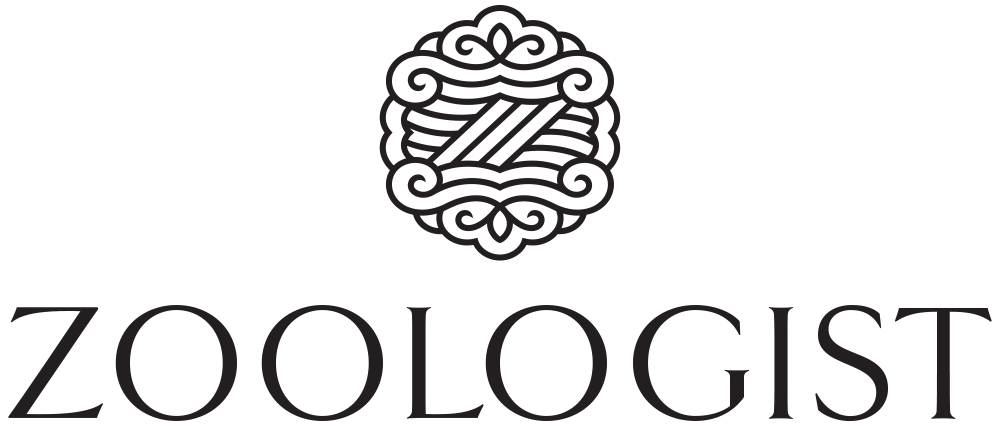January 27, 2019
Please tell us about yourself!
First off: hello, everyone! Thanks for tuning in! 😀
Other than liking sunset walks on long, sandy beaches (that’s a joke, actually), I’m a bit of a foodie. Quite curious about learning about other cultures. Love tea. Enjoy coffee, though it makes me crazy jittery. Love to cook. Incense junkie. Live in a 220-year-old log cabin in the woods not too far north of Atlanta. I’m an old soul living in a modern world.
This is starting to sound like a dating profile!

Can you tell us more about your perfume company?
Rising Phoenix officially started back in 2011, while I was still in med school in San Diego, although it was 2014 before we really started launching products.
Many that follow my work know that I work in Chinese medicine. I’m in private practice in Atlanta. I spent some time working in three hospitals in Shanghai. In my earlier years I spent my last year in university in Avignon, and worked in Paris after college. I’ve been fortunate to have traveled extensively.
While in med school we had to memorize quite a bit of information about hundreds and hundreds of medical substances, including the Chinese pinyin, the common English names, and the Latin scientific names.
The Latin names started tugging at something in the back of my mind. It didn’t take me long to figure out that pharmaceuticals, nutraceuticals, cosmetics, fragrance, flavour, and the incense and spice trades were all built on the back of herbs. Herbs I was really diving deep down the rabbit hole on.
In my third year of school, something clicked and I realized, “I could be a physician. Or, I could be a physician, and… !” I wanted to tap into a much larger world that was built on the back of something most never think twice about: herbs. Foundations in a multitude of global modern-day markets.
Since natural oils distilled/extracted from herbs – what we call essential oils, “absolutes”, etc. – are really pharmaceutical-grade herb extracts, fragrance seemed like a natural place to start.

Have you always aspired to become a perfumer?
Ha! No. I have always wanted to help people. That was pretty open-ended.
As a kid, I wanted to be an archeologist. Or a spice trader. (Seriously, I was a weird kid). I worked in film and television before going back to med school.
It wasn’t until years later, when I was working as a physician and focusing on what I call my “golden triangle”– the point of intersection of the medicine, cosmetic/fragrance, and incense trades – that I realized I kinda DID become both an archeologist and a spice trader!
Many don’t realize that, historically, it was physicians and pharmacists that made fragrances. Up until about 100 years ago, if you were going to buy perfume, your local pharmacist was likely making what you were wearing. In the more distant past, fragrance (i.e., perfume and incense) were considered medicine first, as well as something that smelled nice.
Physicians have been behind fragrance since the dawn of fragrant time.
Ever drank a Coca Cola? When I was growing up in Atlanta, many folks know that Coke’s inventor, Pemberton, was a pharmacist. Sodas in the beginning were medical elixirs. What became Coca Cola was originally a treatment for morphine addiction, which was a huge problem in the 1880s, just after the Civil War. Dr. Pemberton was a war vet and an addict.
Who were Johnson & Johnson? Three brothers that sold medical and pharmacy equipment.
Who was Dr. Pepper? The inventor, Charles Alderton, was also a pharmacist in the 1880s. Dr. Pepper was also a medical-elixir-turned-popular-beverage.
Ever used Listerine? Dr. Lister’s work in England in the 1860s inspired Dr. Lawrence in the US to create a surgical antiseptic based on eucalyptus essential oil, menthol (likely distilled camphor at the time or camphor resin), methyl salicylate (better known as white willow bark, now synthesized and used as an over-the-counter painkiller), and thyme essential oil in an alcohol base.
Realizing that a lot of common household name-brand products of today really started from a place that I, myself, somehow found myself working in inspired me to apply my work in medicine to a much broader body of work.
Hence the name: Rising Phoenix. Giving new life to old practices.
So now you juggle between two businesses, acupuncture and perfumery. Do you wish to take your perfumery business to full-time?
In short, yes. It’s been moving that way since I launched. Fortunately, my work all comes from a common root.
I actually was a contributor to a research paper about ambergris, the first of several that will be published.
I am also part of a think-tank company called Botanical Biohacking, a US/Tibet company developing a variety of cutting-edge Chinese medicine pharmaceuticals for the western market.
Fortunately for me, whether I’m “sculpting or painting”, herbs are herbs. Whether I’m making fragrances or treating patients, I am doing the work from a common root. To me, it’s all the same.

To my understanding, your perfumery products at this moment are just attars. Why attars instead of alcohol-based perfumes?
That is mostly true, yes.
I have a larger commercial project that I’m working to put together the capital to launch. Given my unique background, it’s larger than “just fragrance”. I plan to be making some big waves very soon.
I also am involved in distilling some of the key components I’ve become quite well known for, and I’ve also developed some products for some other companies in the Indian and Gulf markets.
But for now, I’m growing my existing line of products organically.
Personally, I prefer naturals to synthetics and cater to a more naturally minded audience. I think naturals really shine in attar form. In alcohol/EdP fragrances, naturals tend to smell a bit flat, sometimes a little murky. But as I make my attars, well, you know. They get nominated for awards. After all, that’s how you and I met.
I’ve become the largest artisan attar maker in the world over the past few years. It seems that, more and more, I run into folks that are into commercial fragrances who are at the very least aware of the work I’m known for in the artisan niche market.
I’ve become quite well known in the artisan sandalwood, oud/agarwood, and incense scene, and currently offer the widest selection of niche aromatic products anywhere on the Internet.
My attars, in addition to my upcoming commercial EdP line, are all a part of my larger plan.

I have observed that there is a rise of attar culture and business in the world of niche/indie perfumes. What can you tell us about your customers and the subculture of attars?
I actually think that a community of artisans that I belong to might at least in part be responsible for that: www.ouddict.com.
Certainly, Amouage’s original attars, especially now that they are no longer making them, have sent folks searching for other attar resources. As have Claire Vukcevic and Kafkaesque, whom both love attars. Their reviews have also brought more attention to the style.
As I mentioned before, I’ve grown to become the largest artisan attar maker, possibly in the world, but at least here in the West. I’m quite well known for my artisan mysore sandalwood oils as well as my artisan oud oils. My attars are big sellers.
I think I’ve played a hand in inspiring many of these other artisans. I know they inspire me. As we are all colleague-competitors, as I call our little community, I’m commonly telling folks that we are stronger together than we are apart. Running a small business is already a practice in isolation. It’s nice to have a collaborative community. These guys are talented, and quite nice folks, as well.
I think our combined work has been helping to bring an old (and still the largest, albeit rather unknown in the West) form of fragrance appreciation to the West – that of attars.
Do you think more people from the Middle East are now wearing spray perfumes rather than attars, but more North Americans are wearing attars?
Yes. In the Gulf markets, “Western fragrances” (i.e. alcohol-based fragrances) are on the rise.
However, wearing pure (natural) oils and concentrated (modern perfumery) attars is still predominantly how much of the Middle and Far East wears their fragrances. This in large part has to do with the large Muslim population in the Gulf and SE Asia, and their tendency to avoid alcohol, even in fragrance form. And, particularly in the Far East, they still have a tendency to like lighter, more natural compositions.
Here in the West, I think there is a growing awareness and appreciation of older forms of perfumery. Alcohol-based perfumery is really French or British-style perfumery. It is not the only form of perfumery, and far from the oldest form.
I don’t want to make any ridiculous claims, but I do think the growing popularity and visibility of my work and that of my colleagues over the past few years has contributed to this growing awareness. Certainly, the artisans of the Ouddict Community are making this rather unknown form of perfumery much more visible in the West.
I’m thinking Dodo might need to be Zoologist’s inaugural attar!

I remember seeing your Facebook photos of oud/agarwood you have acquired from various sources. Can you tell us more about them?
According to the Internet (reliable, right?), ebony is the most expensive wood on the planet. In reality, agarwood is the most expensive. Sandalwood is the second most expensive. Agarwood usually refers to the wood, and oud often refers to the distilled oil obtained from agarwood. It is a regulated material, and I am licensed to both import and export it.
The root of “perfume” is Latin – “per fumum”. Meaning, “through smoke”. In many cultures today, the term “perfume” refers to BOTH incense and what you and I would call perfume or fragrance.
The backbone of both the fragrance and the incense industries is agarwood and sandalwood. Only recently is the West being reintroduced to agarwood, although it has long had a history in Europe and the Catholic church. King Louis XIV of France was known to wash his clothes with and douse his bed in oud hydrosol, for example. The Catholic church has been using agarwood in incense since the inception of the church, and Jews and Muslims alike have made use of “precious aloes” (i.e., aloeswood, a.k.a. agarwood) since their respective beginnings, as well. In the East, it has been well-known and used as both fragrance and medicine dating back long before the written word. Agarwood has close to 10,000 years of recorded trade. It is, by every definition of the term, one of the original global trade commodities.
Rising Phoenix is the premier resource for high-quality agarwood in the US and in the West at large. I definitely offer the most diverse selection of species and origins, as well as a wide diversity of forms through which to enjoy it. Agarwood, as it happens, has a terroir diversity similar to that found more commonly in tea, coffee, chocolate, wine, scotch and whiskey.
Agarwood has captivated the minds of people for millennia for a reason. See, a rose smells like a rose smells like a rose. Certainly, country of origin, species of rose, and extraction method play a role in how a rose oil will smell. But they will all smell of rose. Not too much diversity. Line up 10 different Oud oils and many may guess incorrectly that they aren’t all Oud. Depending on the origin, species, and the vast array of creativity used in distilling it, the oils have an almost limitless number of iterations in how it might smell.
Same can be said of the wood. There are many cultural differences in how it is used. In general, the Arabic tradition is to burn on coal. The Japanese (and as an extension, Chinese and Taiwanese and Asians in general) heat with an indirect heat source (like a coal buried in ash) or, more commonly today, on an electric heater with more gentle heat. Combustion vs. volatilization. There is also the method of “senkoh”, that of the incense stick without a wood core that’s most common in the Japanese tradition. Not to mention, it is used in Bakhoor (Arabic) and the wide range of Asian compounding traditions of incense using agarwood (and sandalwood) as the backbones upon which to build a blend.
The fascinating thing about this wood is the sheer diversity of ways to use and enjoy it, and the resulting vast array of how it may smell. One could spend a lifetime studying agarwood and oud and never exhaust discovering some new scent found within it.

In 2017, you started a Indiegogo crowdfunding campaign to bring your business to a higher level. How did it go? What is your ambition?
The campaign itself wasn’t successful enough to raise the capital to launch what I’ve got planned. However, it’s continued to be useful, as I am actively working on raising the capital for my commercial launch.
I spoke earlier in the interview about my larger ambitions, and folks should know that I never stopped fundraising. I am getting quite close to having the capital to actualize what I’ve been working on these past years.
For the time being, I’ve been growing organically. The publicity from Dodo and my work with Zoologist will also serve as key signposts to the good work I’ve been doing and the growing success of Rising Phoenix as a brand. In other words, stay tuned!
In retrospect, did you think you were too ambitious, compared to much smaller startups that grew their business “organically”?
“Shoot for the stars and you might hit the moon”, right?
Ambitious, yes.
I shot a pilot almost 15 years ago for the Food Network as the host of a “Field to Fork” kinda food show with one of Martha Stewart’s former producers. The show didn’t get picked up, but have you seen Netflix food shows lately? I was also contracted a few years back for a show about ambergris being developed for The Discovery Channel. That also didn’t get green-lit. We’ve seen more and more documentaries, and even a show called “Perfume” on Netflix now. I’ve been making attars for years. Attars are now beginning to gain some mainstream appeal in the West. I’ve had a tendency my entire life to be ahead of the curve.
I am also a believer in Divine Timing. Things didn’t quite work out when I was hoping, but things are certainly building up to it. I have had a lot of opportunities thrown at me that I haven’t yet been able to capitalize on. But the time is coming. Of this I am certain.
The scents you wanted to release were actually alcohol-based. How come? Is Dodo your first “alcohol-based” perfume design?
It is not, no. I actually have a line of EdPs I’ve developed for Rising Phoenix that are part of my larger commercial plan. Luca Turin has had a peek at these, and he seemed to like them – ironically, especially the fougère I developed, Phoenix Fougère. You can read more about his thoughts on my brand over on his site, Perfumes I Love. These fragrances are, as of yet, unreleased.
I’ve also developed both EdPs and Attars for a few companies in the Gulf and Indian markets, although Dodo is the first where you’ll likely see my name attached to it.
Dodo is alcohol-based because that it was what you, the Zookeeper, asked for. Although I’m still trying to convince you that Dodo needs to be Zoologist’s inaugural attar release.
How different is it to design an alcohol-based perfume compared to attar? What are the challenges?
Most of my work for Rising Phoenix is natural, and my upcoming commercial line is “naturally minded”. It includes a line that I have planned that is more modern. Different lines will have different target market appeals.
Some of the other work I’ve done for brands overseas has been mixed media, usually with an emphasis on synthetics. I kept the work I did for Zoologist as natural as I could, although it is certainly a modern fragrance. Expect a modern work.
In a fragrance, I would say that synthetics have a much larger footprint than do naturals. So the quantities of synthetics are much more dose-sensitive. Naturals are much more forgiving, although some – like natural oakmoss or cinnamon, or smokey materials like cade – can bomb out a fragrance with a drop too much.
Dodo is attar-like in its density. It’s not a fragrance that will be understood by smelling it from the cap, pleasant though that is. It’s complex. It’s unexpected. It tells a story most aren’t trying to tell.

Let’s talk more about our collaboration, shall we? We’ve known each other on Facebook for a while, but the first time I met you in person was when we were both attending the 2016 Art and Olfaction Awards in Los Angeles. Your beautiful Musk Rose Attar was one of the nominees that year. After the event, we decided to collaborate on a fragrance, and I immediately suggested making a fougère. Zoologist didn’t have a fougère. Luca Turin praised your Phoenix Fougère highly, so I thought you would be the perfect designer for such task.
Fougère means ‘fern’ in French, and strangely, the first animal that came to my mind that was associated with fern was a dodo! Dodos couldn’t fly, and I imagined they ran amok in forests and woods covered with ferns on the island of Mauritius until they were hunted to extinction. I also associated fougères to a genre of scents of the bygone golden era, meaning they smell dated. Dodo seemed like a perfect match for that feeling. Do you agree?
Absolutely agree!
Ironically, Luca Turin said in his piece on my brand that Phoenix Fougère is (and I’m summarizing here) the nicest fougère he’s smelled since their inception in the 1880s. I think once I get around to launching it, it will be quite a success.
I am quite proud of Dodo. As you mentioned earlier, it manages to be both iconic, yet modern. I think you, Victor, might be surprised with what I am hoping will be a commercial smash hit for your brand. I think Dodo might surprise everyone. Maybe it’s wishful thinking!
If you folks would like to smell a natural fougère/chypre, check out Man Musk. It’s already becoming somewhat of a cult hit. Real oakmoss, galore!

How did you approach the design of Dodo? What materials did you use to achieve that feeling?
At its basis, a fougère is formed by the interaction between oakmoss and bergamot. Together, they create an effect that doesn’t happen individually, and it is this interplay that forms the chypre/fougère fragrance family – a scent concept commonly known as “fern” (ferns have no natural fragrance of their own).
The classic fougère is centred on lavender, oakmoss and bergamot. I wanted to break some molds with a fashion-forward new take on an old concept. A Rising Phoenix, so to speak. Classic, yet very modern and fashion-forward, all the while staying true to Zoologist’s brand as a cutting-edge concept house.
The dry down, in particular, pays homage to my Attar style and design. I think you’re going to find it a killer fragrance to wear!
Dodo to me is kind of peculiar. It’s both modern and vintage-smelling. In your opinion, do you think it’s strictly a “fougère”?
By definition, it is a fougère, yes, but minus the lavender.
My goal at Rising Phoenix as a brand is to make old things new by drawing inspiration from the Phoenix: new life coming from the death of the old.
I wanted to apply this same kind of mentality to Dodo by drawing on historical DNA, but fleshing out the beast with new life. I think your impression of it being both modern and vintage is testament to the success of that approach. Dodo will feel both familiar and exotic, all in the same breath.
Dodo is the only perfume where I thought the first take was perfect. In fact, I didn’t want to believe that and asked you to give me one more round of revision, but in the end, I still went for the first version.
This was the source of quite a few laughs for me back when we were designing Dodo.
You handed over the concept to me, and I sent up my take on it. You loved it, and that seemed to bother you. I don’t think you were expecting to like my first go at it, and so you distrusted your own opinion. You had me take a few more goes at it, but in the end you circled back to my first rendition.
I have a tendency to do this with my own work. My first attempt is usually what ends up getting launched. I never really know how something will be received until it’s out there. Fragrances I worry the most about tend to be the biggest hits. Musk Rose Attar and Sicilian Vanilla were two of my first fragrances. It took me years to release them (5 years, to be exact). They've become two of my biggest sellers, and Musk Rose Attar ended up being nominated for an Art and Olfaction Award, providing the opportunity under which we both finally met. Go figure!

Currently, Man Musk is really gaining in popularity. Again, I never thought folks would like it. I was terribly wrong. I liked it so much that I thought no one else would. I held off for ages on releasing it as a result. Another home run.
It’s been three years after its design and your initial worry about how Dodo would be received, and you’ve been getting fantastic feedback on it from those who have smelled it. And only now are you getting around to launching it. I dare say, you sound a lot like me!

Above: Reconstruction of a Dodo, issued at the Natural History Museum in Vienna, Austria. Thilo Parg / Wikimedia Commons. License: CC BY-SA 3.0
The opening of Dodo is fresh and tart, but as it reaches dry down, it becomes very musky, with smell of feathers!
Indeed. Many of the notes used in Dodo aren’t available to me as naturals, and I wanted to take advantage of this as I was composing it.
A lot of commercial fragrances are overly sweet, or overly musky, or overly… well, overly everything.
I like to cook, and the fun thing about cooking is using very dramatic ingredients like salt or vinegar on their own to really brighten up a dish. I made use of some tart ingredients – lime, lychee, and raspberry – like I use vinegar, or sourness. A dash to brighten up a dish and cut through any heaviness.
Ambergris and musk are salty ingredients. They are like umami. They give a dish body, rich mouth feel, and a savoury component.
Just like in food, sour and sweet (from the amber) counterbalance one another, as do sweet (ambergris) and salty (ambergris and musk).
I think we successfully pulled off using some juxtaposing and polarizing ingredients to make a very balanced meal for our noses. As for “feathery musk”… well, Dodo is a bird, after all!
Actually, how do you describe your style? Do you think your fragrances tend to smell more on the “mature” side? Who is the target audience of Dodo, in your opinion?
My style is really inspired by the phoenix. I make old things new.
The core of my style is near and Far Eastern, drawing a lot of inspiration from historical times and places. But I aim to do it in a way that feels both familiar and exotic to everyone who tries my work.
My Gulf Muslim and diverse Asian clients feel familiarity, as Attars are a part of their cultural experiences. But they feel exotic to them, as they aren’t purely Asian- or Arabian-smelling.
On the other hand, to my Western clients, they feel exotic, as these clients are not culturally used to attars. But I draw on cultural and historical themes they are familiar with, and somehow manage to balance both this exotic and familiar selection of scents.
Rising Phoenix aims to fill a gap for more natural products. I tend to target folks that don’t want as many synthetics in their products, but I have a growing appeal among frag-heads, as well. It’s a niche, certainly, but a rapidly growing one.
Dodo, on the other hand, appeals to a wider fragrance market that doesn’t have the expectation for mostly or all-natural fragrances, yet still wants a uniquely wearable artistic scent. I expect Dodo will be well received for its artistic take on scent, but it may surprise folks at just how commercially appealing it wears.
What is next for you?
“What we do every day, Pinky… trying to take over the world!”
~ Pinky and the Brain
Note: Zoologist Dodo will be available in March, 2019
November 20, 2018
By Rachel Syme
"Until recently, designer perfumes represented the snooziest corner of the fragrance market. Not anymore. In today’s climate, playing it safe is a one-way ticket to irrelevancy, and this year’s crop of high-fashion scents radiates risk and adventure."

"It used to be that if you wanted to buy a new perfume, you’d have to trot down to your local department store. But the internet has completely changed the way consumers discover scents—now you can order samples from thousands of independent perfumers with a click. The new digital scentscape has led to a rise in more challenging fragrances, the kind you’d never find at a mall."

"Zoologist Tyrannosaurus Rex, which smacks of sticky pine, tart geranium, and juniper oil"
September 13, 2018
PerfumesTheGuide.com by Luca Turin
"This thing is to the currently fashionable empyreumatic niche fragrances (smoke, incense, creosote) what cars that have been squeezed into a small cube by sculptor César Baldaccini are to a family saloon. Like them, T.Rex. is a compression, an object of mangled, impenetrable structure, with no air left inside and no discernible top and bottom. It is probably the most laconic fragrance ever devised."
TakingOneThingOff.com
"It smells rich and addictive…", "It’s sexy as hell. Damn, give me a big, rich sandalwood base any day and you’ve got me. It’s like nuzzling into the chest of a biker who’s ridden through 50 miles of Mysore forest."
Cologonossieur.com
"It is also another example of how Mr. Wong can accentuate the positives of the perfumers he works with. Tyrannosaurus Rex is a show of creative force multipliers producing something amazing."
Kafkaesqueblog.com
"One can almost imagine a scaly, leathery, black-grey reptile roaring in a prehistoric swirl of smoke and molten lava, perhaps breathing fire to burn down the trees in his path like a dragon."
Scentbound.co
"The result of Gardoni’s approach is a complex composition of notes and accords completing each other. The trick to the success here is getting the balancing act right. You can experience it done right in Tyrannosaurus Rex - a smoky leathery composition offset by dense creamy flowers."
Fragrantica.com
"The real leap of T-Rex is that all these fantastical visions of a hellish world are there in the perfume, like a miraculous imaginary time capsule. But it's been blended so that we can actually wear it, bury our faces in it, sink in the curious warmth."
The Fragrance Journey
"Initially I smell something other-worldly, as if I've landed on a planet with a strange and different atmosphere to which I am not accustomed. … Somehow he creates a moment of magic from these mundane ingredients, a pause where I thought, "I haven't smelled anything exactly like this before."
July 28, 2018
Could you tell us about yourself?
That’s the most difficult question! I am an architect and a perfumer. The two professions don’t appear to share any connections, but I think they share a common sensibility – to experience something. Say, the shivers you feel when for the first time you walk in the Michelangelo library entrance in Florence, or the shiver you feel the first time you smell tuberose absolute. They are obviously coming from very different origins, but they are so deeply human – and so beyond what you know, your culture, your skills, your prejudices, your knowledge. It’s the pure power of nature, and here nature expresses itself through matter and space, and through flowers. It's easy to find yourself in a beautiful mood with the right light coming through the tree branches; it’s an experience of a space. It doesn't matter whether if it's designed by humans or by nature.
You are an architect first, perfumer second.
I am an architect first because I've been doing architecture longer. I had been feeling safe for a long time in the architectural world than in the perfume world, because it was something I knew better. Now I feel unsafe in both of them, for they are completely different fields coexisting in my life at the same time. They really have helped me know myself better, and I enjoy both of them. Don’t be bothered so much about what you do “officially”.

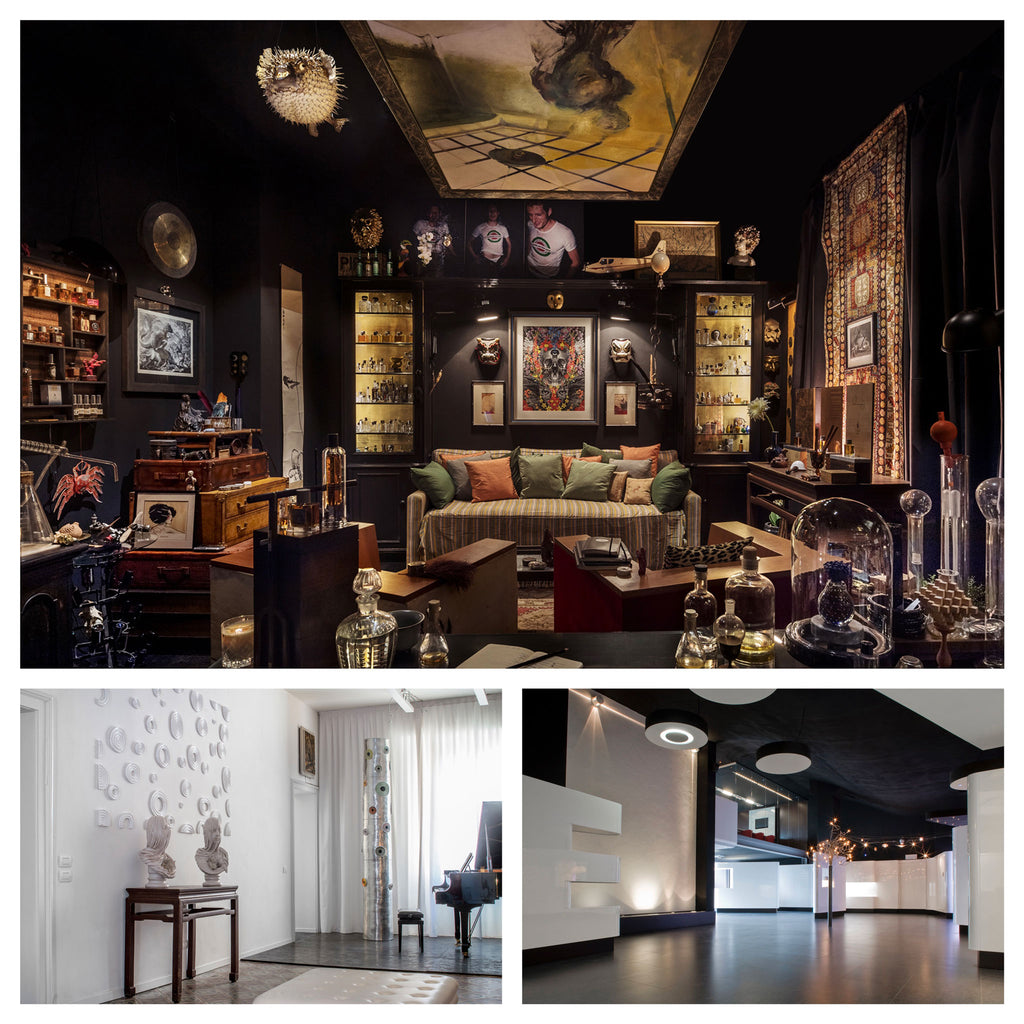
Above: Various Architectural and Interior Design Works by Antonio Gardoni
When did you become interested in perfumes and perfumery?
Eight or nine years ago. And I have to say I have never been a “perfume person”, never been that geeky about the perfumes that I wore, or genuinely interested in the subject. I got interested in perfumery because at one point I was a very interested in plants – trees, bushes and flowers. I had a “crush on nature” and tried to understand it. I got into perfumery because I was “experimenting with nature”, like chopping things up, extracting things, playing with raw materials; and eventually I really felt, okay, let’s try to simulate certain aspects of scents that nature delivers with the materials I have on hand. And that's how I started formulating, in order to reproduce an idea of nature, and I quickly moved from it because it was too difficult. For nature does it better. So I started playing with making perfumes in an unexpected way.
For years I had played with naturals, for it was easier for me to connect them with a source visually – if you picture a garden with pines, roses or grasses, etc., you could think of the materials to mix together. There were many private experiments to recreate such mini landscapes, and I called them landscapes because one of the fascinating things about architecture is abstraction. So I have realized that the “garden” I tried to create was not anymore a visual garden, but an ideal garden; furthermore, it's not anymore an ideal garden, it's a landscape, an idea, a concept.
It's very critical for me to understand the results of my private experiments. I had faced a lot of questions while studying them. I was trying to achieve a certain effect for the concept that was in my mind, and sometimes I was unable to do so. So I started studying organic chemistry from super-boring organic chemistry books, and most of the time I could find possible answers to some of my questions. While studying, you think about other ways, too, so you also learn in some non-direct ways. I'm still studying, and it’s continual process.
How long had you been experimenting with scents before you decided you wanted to publish your first perfume?
There were a couple of very early experimental “perfumes” that I had given to my family and friends. But Maai is the first official, “proper” perfume, and it was released about five years ago.
I remember when it first came out, it made a splash in social media, and of course, it was a hit! Did the positive reception surprise you?
The positive reception and reactions I received from people whom I had never heard of were a massive surprise. I really felt people were mad at liking Maai that much at the beginning! I couldn't believe it for it was really one more big experiment in my own little world. And suddenly people from all over the world started sending me e-mails, “Can I have a sample? Can I have a sample?” At the same time, I started reading things about Maai, and they were shocking – in a good way. The comments and reviews from the good ones actually helped me a lot in learning and understanding what I've done, because I wasn't that conscious about my creation process and what that perfume meant.
What is Maai about?
Well, I personally still don't know! I trust a lot of other people’s opinions on Maai. To me, Maai has something to do with the big conflict that I still have with tuberose – it’s a fight between me and tuberose and how Maai could expose certain aspects of certain smells, when they were in an interlocked play of hide-and-seek in a perfume.
When you were building Maai, had you already learned about the classic perfumery structures and used them as a reference, or have you never followed any rules or used any references?
This is a very tricky question, because if I answered “yes”, everything makes sense. If I answer “no”, it might sound like there was no ambition. But the real answer is, I actually don't know, because I didn't know that much about classic perfumes back then. I think it was almost an accident that it happened to smell like an old big chypre from the past. It was very surprising for me to find out that people reference it to perfumes of much older style. I thought I was doing something new! I don't smell that many perfumes, not because I don't want to, it just that it doesn't happen. I am interested in perfumes, but I'm not interested as well. There isn’t something that I am desperate to smell, be it a new perfume or old perfume. I mean, I can live without smelling perfumes.
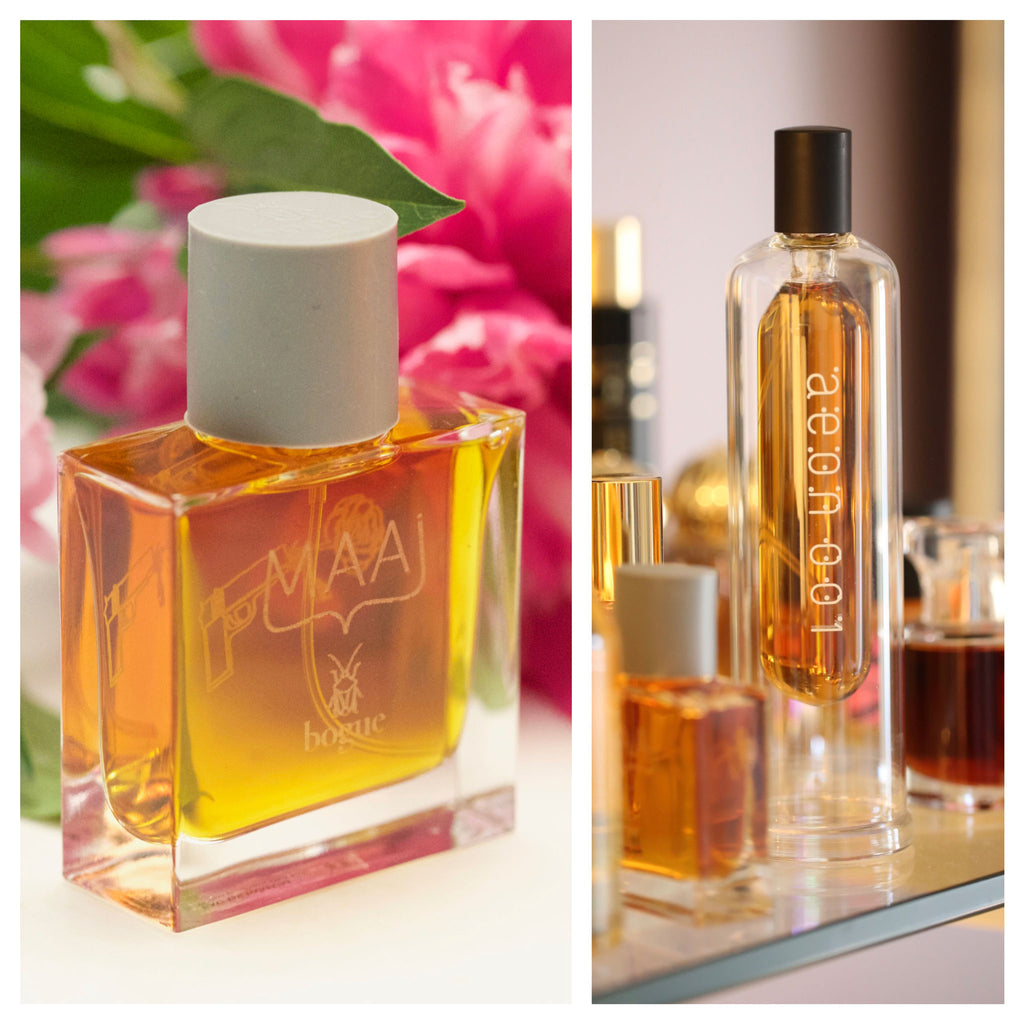
Above: Bogue Maai and Aeon 001 Perfumes
After Maai, you created AEON 001 for a different perfume company and they intentionally made the perfumer anonymous. (Ironically, this is what most perfume companies had been doing in the past, and in recent years, they are doing the exact opposite by revealing the perfumer's name.) A lot of people guessed correctly that it was your work – in fact, people often say your perfumes have a distinct style. Do you agree? How do you describe your style?
How can I not agree? I believe when people say I have a signature style, I'm not fighting against it. I mean, if you want to call it a style. We are what we are, and we can't fake it. I'm not trying to pretend to be different from what I am, so that probably applies to perfumes as well.
AEON 001 was a fantastic project. The idea of hiding the perfumer was actually mine, because I believe that the perfume itself should be stronger than its creator. I think that in this little world sometimes you are a bit too obsessed about knowing who made it, and that doesn’t help us approach the perfume itself.
And how would you describe your style?
I don't know. The only way I can describe it involves a bit of a technical process – I try to create mini clashes between each ingredient that I use. Each ingredient smells different with its counterpart, so if you use a material together with its “enemy”, and achieve a balance, you get interesting results, kind of like you use the citrus to counterbalance its worst enemy…
What's the worst enemy of the citrus?
Well, it depends. It depends on the battlefield. The worst enemy of a citrus could be a deep animalic note. It could also be a “too-generous flower”, so generous that the flower is pushing to come out, and the citrus tries to kill at the beginning but the citrus dies fast and the flower wins.
People often describe your perfumes having bombastic projection, with very long-lasting quality. What's the trick to it?
Use a lot of materials! (laughs) Essentially a high concentration of perfume! For me, anything below 20 percent is very difficult to make work. I work with a lot of naturals, and somehow they need bigger quantities to deliver a certain effect.
What about synthetic aromachemicals?
I learned a bit how to use aromachemicals, and they are absolutely functional. I love aromachemicals, but I can't say I'm using them 50/50 in any formula. With all naturals, it is like a battlefield from the 17th century – but with aromachemicals, suddenly you take on someone with a laser gun or atomic bomb. So it's really interesting and exciting for me to mix both together.
You also create bespoke perfumes for clients. Can you tell me more? Do you enjoy creating them?
That's probably what I have enjoyed the most for the past four or five years, because it's a very different job from creating and selling your own perfume., When you work with a private client on a bespoke project, you have a very intimate one-to-one relationship, and you try to learn things – first of all, from the person in front of you. And at the same time you try to liberate the person from certain prejudices and certain preconceived ideas. So it's a very challenging process, because the number of time I've been approached by people saying, “Oh, the perfume I want has to have this material, that material,” and they end up with something completely different because through the process they found out that the material or an idea of a certain perfume that they used to hate was actually a fixed idea – but experienced in a different way or challenged in a different way, it could change their mind.
Also, designing a bespoke perfume also provides me a great opportunity to experiment with materials that are too expensive to use in bigger proper productions. And each of my private clients really has given me the possibility to explore notes, materials, process, ways of doing things, and at the end, they received the most diverse perfumes for weddings, for lovers, for very famous people, or completely anonymous people. It’s so challenging, interesting, super fun – and sometimes these bespoke processes gave me inspiration for something for my own perfumes.
Occasionally I see you post photos of your non-perfumery work, such as faucet design and shop interior design on Facebook. It seems to me that you are never short of projects. Do you ever intend to take your perfumery full-time and expand the distribution network?
I think my perfume passion needs architecture to survive, not because of the financial side of things, but it provides some sort of counterbalance. Fragrance is like a piece of cloud – ephemeral and extremely difficult to be bring down and to track. But when you go inside a building that you design, you see pure, physical, heavy concrete steel structures, and that physicality creates a counterbalance.

Above: Retail Space Design and Industrial Design Works by Antoni Gardoni
I don't think I would ever leave architecture behind and make perfumery a full-time job. I don’t not even plan to expand my retail network or increase production, etc. You know, as in a formula, you try to reach a good balance of things. It doesn't mean it has to be a pleasant balance. But it's my own balance.
For me, the distribution network has always been very, very, based on personal relationships. I've been lucky enough to work with some amazing people. And I don't believe in having two or three more doors opened in order just to sell 10, 20, 30 more bottles. I know it takes time and concentration, and focus on good things to establish a good business relationship.
You have been one of the judges for the Arts and Olfaction Awards (A&O) for the past few years. How did that happen?
This happened because of Maai, essentially, again. Maai was involved in a very interesting and fun project about an old 1960’s “smell-o-vision” movie, “Scent of Mystery”. The Institute of Arts and Olfaction, together with producer Tamara Burnstock, were rereleasing it, and they tried to create a new scent for the “scent track” to the movie. In the original movie, the main female character was Elisabeth Taylor, and she wore a perfume called “Scent of Mystery” by Elsa Schiaparelli. They decided to use Maai as her perfume in the movie. And when we got in contact with the institute I met Saskia Wilson-Brown (the director of A&O). That’s how we became friends, I later got involved in the judging process.
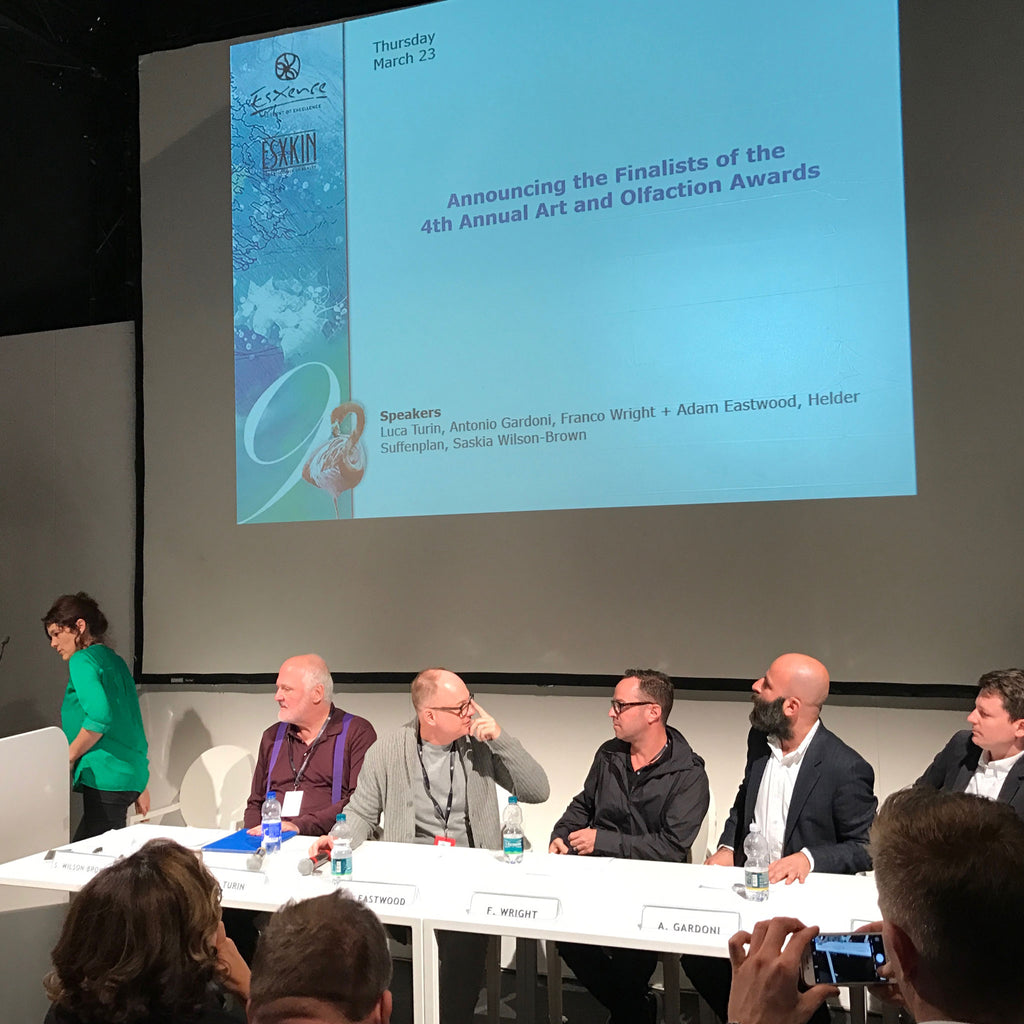
Above: At the 2017 Art and Olfaction Award Finalists Annoucement Event at Exsence, Milan Italy
What did you observe? Did you gain any insights from evaluating so many perfumes?
I did gain some experience from some other people's work. But it's an activity I don't do much on my own. Being a judge almost forces you to evaluate and smell things that you will never smell, and that's super interesting. Sometimes I really struggle to understand what I'm smelling, but I rarely smell a perfume that I find wrong. However, it’s very important for me to understand what the creator is trying to say through the perfume – some people are so soft spoken that you can almost not hear what they are saying; some people are too loud, and some people are talking in vulgar words, etc. For the past three years I've been a judge for A&O awards. There’s always something worth listening to in each perfume. So that's what I have learned. I’ve learned to listen by being a judge.
Have you come to a conclusion of what type of perfumes tend to win the award?
No idea! I've seen the most different things winning over the years. I'm so happy with the diversity and peculiarity, and, you know, when Zoologist Bat won the award (in 2016), I thought it was amazing. It was a very important thing for me, because Bat was a perfume not meant to win an award in any way. It was too extreme in certain aspects, too conceptual, too hard to experience, and it demanded a lot of process from we are used to experiencing, and sometimes difficulties are not a good thing when you want to win an award. Sometimes going on an easy way makes life easier, you know? And I think it demonstrates the possibilities of winning an A&O award are very varied. It really challenged the perception of who can win or lose. I think it's a very exciting process, and it really helps people understand new possibilities and new directions.
Let's talk about Tyrannosaurus Rex!
Finally!
I remember vividly how this project began - I first met you in 2016 during the Arts and Olfaction Award, and we exchanged our perfumes. I gave you a bottle of Bat and you gave me a bottle of Maai! About a year later, I met you again at the Milan perfume exhibition, Esxence. I jokingly told you that if I could rename a vetiver-themed perfume of yours, I would call it T-Rex, because it smelled very primal and dangerous to me. I said maybe you should develop T-Rex for Zoologist, and we both immediately laughed it off. The next day, early in the morning, you messaged me over the phone that you wanted to work on this project because it was stuck in your head. We later sat down in a restaurant and talked for hours about what it should smell like.
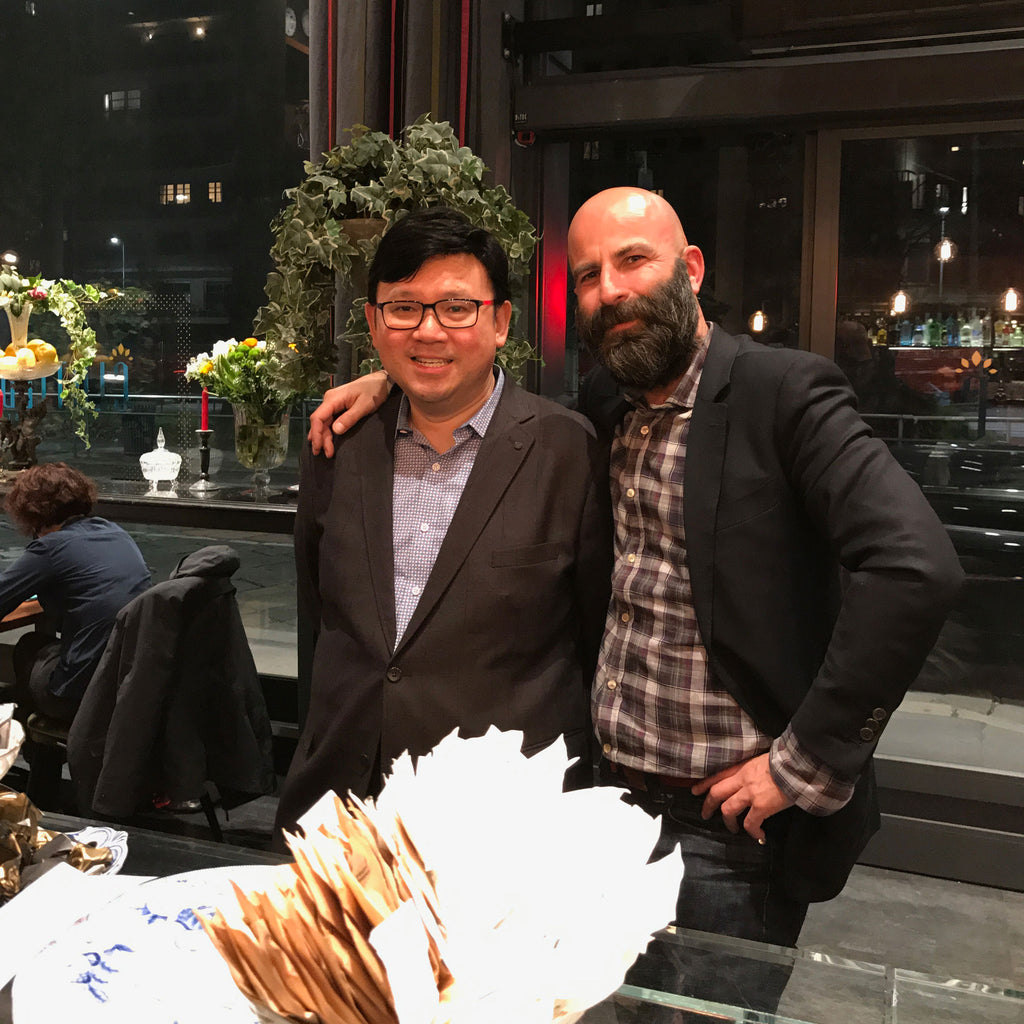
Above: Victor Wong and Antonio Gardoni (2017)
My vision of T-Rex was a loud, chaotic, primal, dangerous scent. I wanted the scent to be an olfactive version of a fantastical, colourful illustration one would find in a junior science textbook – fascinating, lots of things happening in the background like volcanic eruptions, forest fires, crazy gigantic flora and fauna, and of course, T-Rex tearing a poor victim's bloody body apart. As you might already know, I'm a very visual person, and I like to send perfumers a "mood board", or photo collage when a project begins. With that, hopefully the perfumer would take on the clues and incorporate the feelings that it evokes into their creation. Then you told me you were not a visual person when it comes to perfumery; to you, perfumes have more of a "sound" quality. Could you elaborate on that? And what does T-Rex "sound" like to you?
It is difficult to talk about perfume, because we don't have the language to properly describe scents. So there is nothing wrong about referring to images or art. To me, sound is the closest reference because it has an ephemeral presence. It starts, explodes, expands, then leaves. Doesn't matter if it is the sound of a car passing by or it's a sound from a Mozart concert. It's more about the way sound manifests itself, how it demonstrates its physicality through the vibration of air. So sometimes for me it's easier to think about the “vibrations” of a perfume in sound than images. Perfumes need a space to work – with no space, there will be no “sound”, and we will not smell anything. So they need architecture in a way, something to reverberate, like you go against the wall and jump back.
So what does T-Rex “sound” like to you?
To me, T-Rex sounds like a very gentle noise. A gentle, continuous, annoying almost, noise. It's like continuous drops of jelly substance coming down from a leaf, or blood coming down from the mouth. The sounds of swallowing, violent sounds of falling water coming down from the river into the lake, different sounds of water from a very faraway distance… it's very visual actually. (laughter)
And which ingredients did you choose to achieve that?
In T-Rex I tried to use some materials that I considered “enemies and friends”. I have used some very earthy materials like patchouli to create a thick ground, or horizontal surface. Right above the horizontal surface is some sort of a balsamic floral layer made out of very different materials like ylang ylang or champaca. It is lighter, aerial, but not light enough to go up in the sky, just light enough to go up and come down in droplets to create some sounds. When the droplets hit the ground, or muddy lake, certain materials such as smoke bounce back and evaporate, while the patchouli gets absorbed. These matters go up and down, creating a scenario of interest to me.
When I did my research on dinosaurs, I read that at their height of their existence (the Cretaceous period), plants started blooming for the very first time. I insisted that T-Rex should have a big floral accord. Did that throw your original vision of T-Rex off? Do you think we have sacrificed the ferocity of the perfume by adding florals to it?
Not at all. I actually found florals absolutely essential in T-Rex. If you think about it, we actually have no real references to use to design a perfume called T-Rex. In fact, originally I wanted to make T-Rex smell of plastic toys, because that’s the first smell we associate dinosaurs with. We rely on the studies published by scientists, but to be honest, we have no idea what flowers smelled like back then. You have no idea of what those big animals smelled like. Actually, not a single smell you can truly refer to, because that world was all gone a million years ago. So it is important to indulge in the stereotyped idea of what things you imagine would smell like, be it gigantic flowers with super-thick petals covered with dripping nectar; forest fire and exploding lava moving down volcanoes and into cracks, animals killing each other and eating gigantic leaves… but what's the smell of that leaf? What’s the smell of those flowers? What's the smell of Earth?
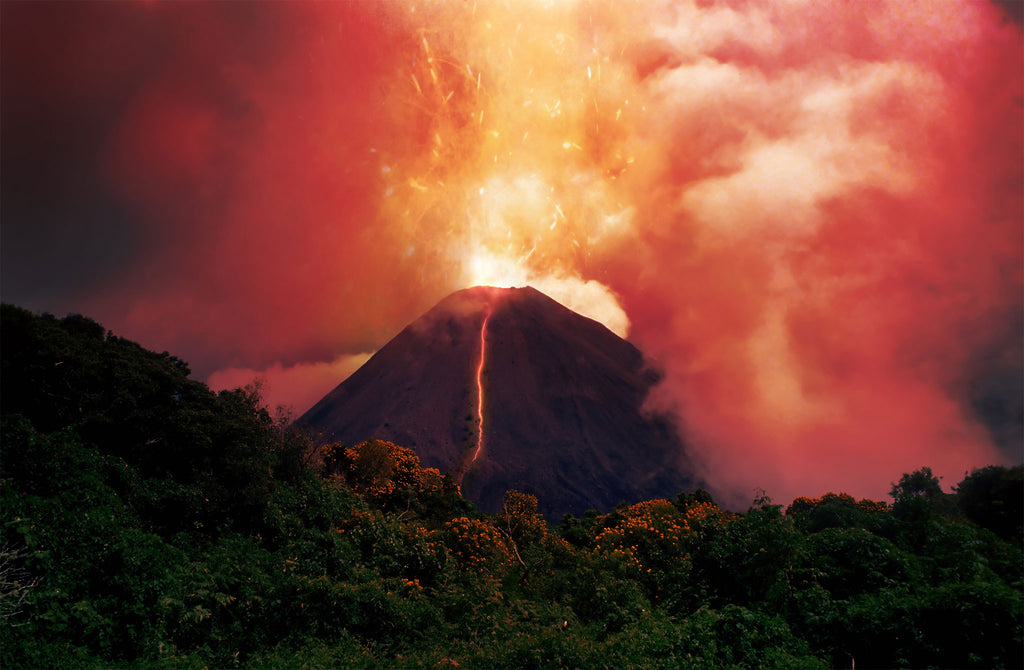
I think T-Rex needed to have all the traditional Chinese elements – metal, wood, water, fire and earth. Not that the perfume smells like Chinese medicine, but those five elements needed to be there. So there is a pungent aspect of metallic notes of blood. Some kind of flowing muddy substance to represent water, smells of smoke and fire for the volcano exploding, earth as in a moving hearth that the blood drips on. And the air during T-Rex’s time fascinates me – there should also be some aspect of the sky in it, because you always think about big trees, big animals, big earth – but can you image the sky in that period of time? It had to be completely mad! We probably had two moons crossing and clouds blocking the sun and strange rains and stones coming from down! Who knows! I mean I don't know, but probably some scientists think they do. So that's why florals didn't affect it badly at all. Actually they helped. I mean, it was obviously easier for me to picture a perfume that was very earthy and very floral in a way, but the way I use florals in T-Rex is not exactly a pleasing easy way. I believe it's showing the generality of a certain idea of the flowers in a vulgar way.
At some point during the development of T-Rex, I suggested toning down the perfume a little bit to make it less avant-garde, but more wearable. Did that compromise your original vision of what T-Rex should smell like?
I think the first version was a very interesting representation of “T-Rex”. As I have already said, this subject can only refer to itself. So how does it compare to something else? Is your face more real in a photo than in the mirror? Or is it more real when after you’ve shaved, or is it more real when someone caresses your face, or when you bang your face against the wall? I think T-Rex is still T-Rex, and it has been T-Rex all the way along. We are just representing the same thing in a different way. You can tell the same story in an hour, in two minutes or with a haiku. I know it's the same story.
I am very proud that this project is going to be the only animal in your collection that is extinct. We're dealing with an animal that is very difficult to relate to… say, you look at an alligator now. Not big enough. Look at an elephant now. Still not enough. To me, it's a very conceptual animal. It's like playing around an animal, but that animal is really just a concept. It's so distant from what we know from experience. So that was really exciting for me, because if you asked me to make a Zebra perfume and said it was interesting, I will say, whatever! You can’t argue that with a T-Rex!
What is next for you?
This summer, I am going to teach some young kids, 6-8 years old, for a couple of days. We will be playing around smells, telling stories with smells. It will be very liberating and amazing because they have no prejudice against smells. You know they can sniff their own poo and feel happy. We will have a very interesting time exploring different materials, mixing them, etc.
The school is a little place up in the mountains, north of Italy, where they do some classes on very different subjects. They asked me if I wanted to do something interesting with them on perfumes. They do classes for adults generally, but they have one week dedicated to kids. It's actually something really challenging to me, for it's not easy preparing the materials because of safety issues.
Thank you so much for your time, Antonio!
Zoologist Tyrannosaurus Rex will be released in Fall 2018.
June 19, 2018
Fragrantica
"You start with a blast, proceed to a sensual dream, only to end in a warm embrace of resinous amber and benzoin, creamy and woody sandalwood, earthy patchouli and the enveloping fluidity of musk."
Perfumes, The Guide, 2018
"★★★ The fragrance is a peppery rose with a strong, very pleasant animalic note somewhere between natural musk and ambergris." - Luca Turin
Colognnoisseur
"At first saffron and pink pepper start to tame the hyraceum. Then a fabulous shot of whisky does the job. Like the hyraceum is soaked in a glass of Jack Daniels. I fell for this each day I wore it."
ScentBound
It is sultry but no as off-putting as the homeless guy funk found in [Serge Luten's] Muscs Koublai Khan. Hyrax has that carnal attraction that is not obvious until someone reminds you you’ve been sniffing your hand a bit too much.
June 14, 2018
A new generation of cutting-edge perfumers is putting Canada on the fragrance map.
Text: Sarah Daniel / Photos: Le Guartier
Like so many bright ideas, Victor Wong’s occurred to him in the shower. The video-game graphics designer had long been frustrated with his 9-to-5 in Toronto, and it was while vacationing at Quebec City’s Château Frontenac that he first got inspired by the power of perfume. He was enraptured by the hotel’s toiletries, shower gel and body lotion, which are all infused with Le Labo’s Rose 31 – a spicy floral scent that the cult perfumers developed specially for the Fairmont hotel brand. The scent’s namesake bloom, Rosa centifolia (also found in Chanel No. 5), is a prized type of the flower and is harvested in Grasse, France.
“I had never smelled anything like it,” says Wong, who promptly set out to test hundreds of perfumes and explore countless fragrance forums, blogs and books. This research ultimately led him to found Zoologist, a niche fragrance brand which features quirky yet technically sophisticated scents that are heavy on synthetic animalic notes like musk and ambergris, all meant to evoke types of wildlife.
Since then, Wong quit his job and his fragrances have earned numerous accolades (among them, Beaver was named ÇaFleureBon’s perfume of the year in 2014, and Bat won best indie perfume at the 2016 Art and Olfaction Awards) and the respect of the perfume elite, including Luca Turin, author of Perfumes: The A–Z Guide and one of the industry’s most ardent critics.
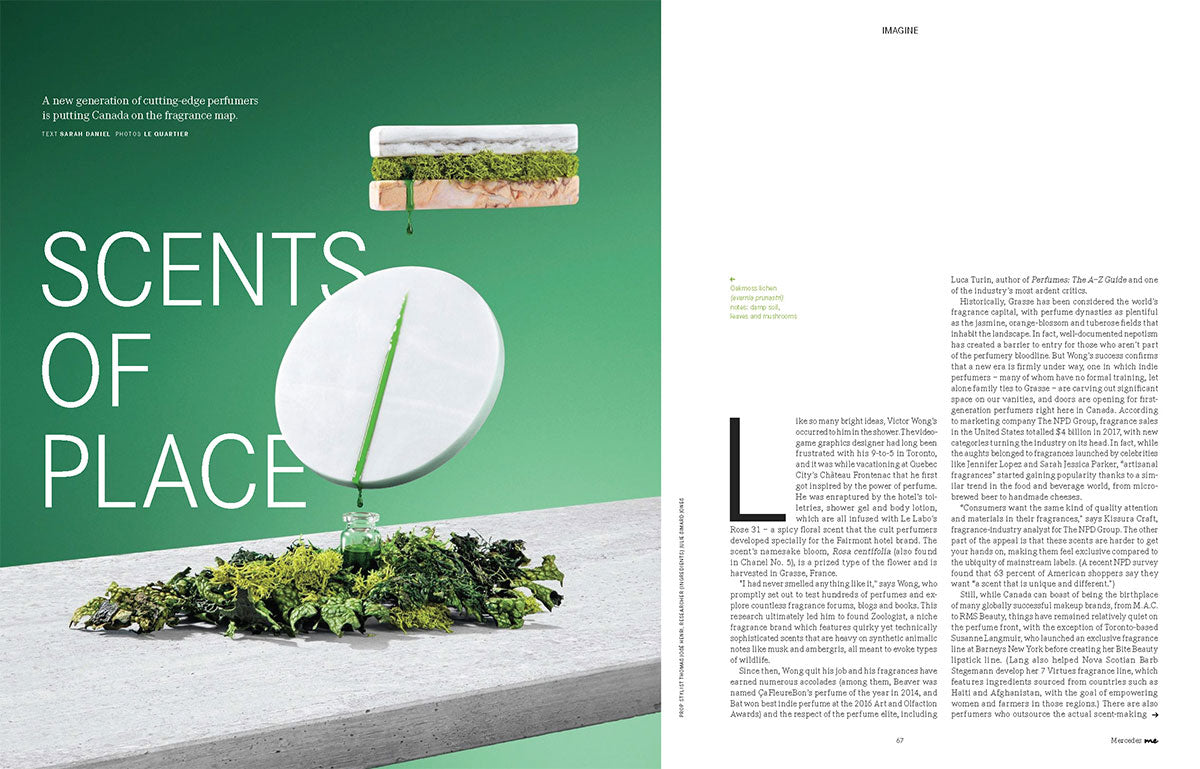
Historically, Grasse has been considered the world’s fragrance capital, with perfume dynasties as plentiful as the jasmine, orange-blossom and tuberose fields that inhabit the landscape. In fact, well-documented nepotism has created a barrier to entry for those who aren’t part of the perfumery bloodline. But Wong’s success confirms that a new era is firmly under way, one in which indie perfumers – many of whom have no formal training, let alone family ties to Grasse – are carving out significant space on our vanities, and doors are opening for first- generation perfumers right here in Canada. According to marketing company The NPD Group, fragrance sales in the United States totalled $4 billion in 2017, with new categories turning the industry on its head. In fact, while the aughts belonged to fragrances launched by celebrities like Jennifer Lopez and Sarah Jessica Parker, “artisanal fragrances” started gaining popularity thanks to a similar trend in the food and beverage world, from micro-brewed beer to handmade cheeses. “Consumers want the same kind of quality attention and materials in their fragrances,” says Kissura Craft, fragrance-industry analyst for The NPD Group. The other part of the appeal is that these scents are harder to get your hands on, making them feel exclusive compared to the ubiquity of mainstream labels. (A recent NPD survey found that 63 percent of American shoppers say they want “a scent that is unique and different.”)
Still, while Canada can boast of being the birthplace of many globally successful makeup brands, from M.A.C. to RMS Beauty, things have remained relatively quiet on the perfume front, with the exception of Toronto-based Susanne Langmuir, who launched an exclusive fragrance line at Barneys New York before creating her Bite Beauty lipstick line. (Lang also helped Nova Scotian Barb Stegemann develop her 7 Virtues fragrance line, which features ingredients sourced from countries such as Haiti and Afghanistan, with the goal of empowering women and farmers in those regions.) There are also perfumers who outsource the actual scent-making side of the business, like Ben Gorham of Byredo, and Michel Germain, who had New York’s Sophia Grojsman (the mastermind behind hits like CK Eternity and Lancôme Trésor) help him develop his women’s fragrance, Sexual, for his wife Norma. Germain, who has been in the industry for 25 years, received a lifetime achievement award at the 2016 Canadian Fragrance Awards.
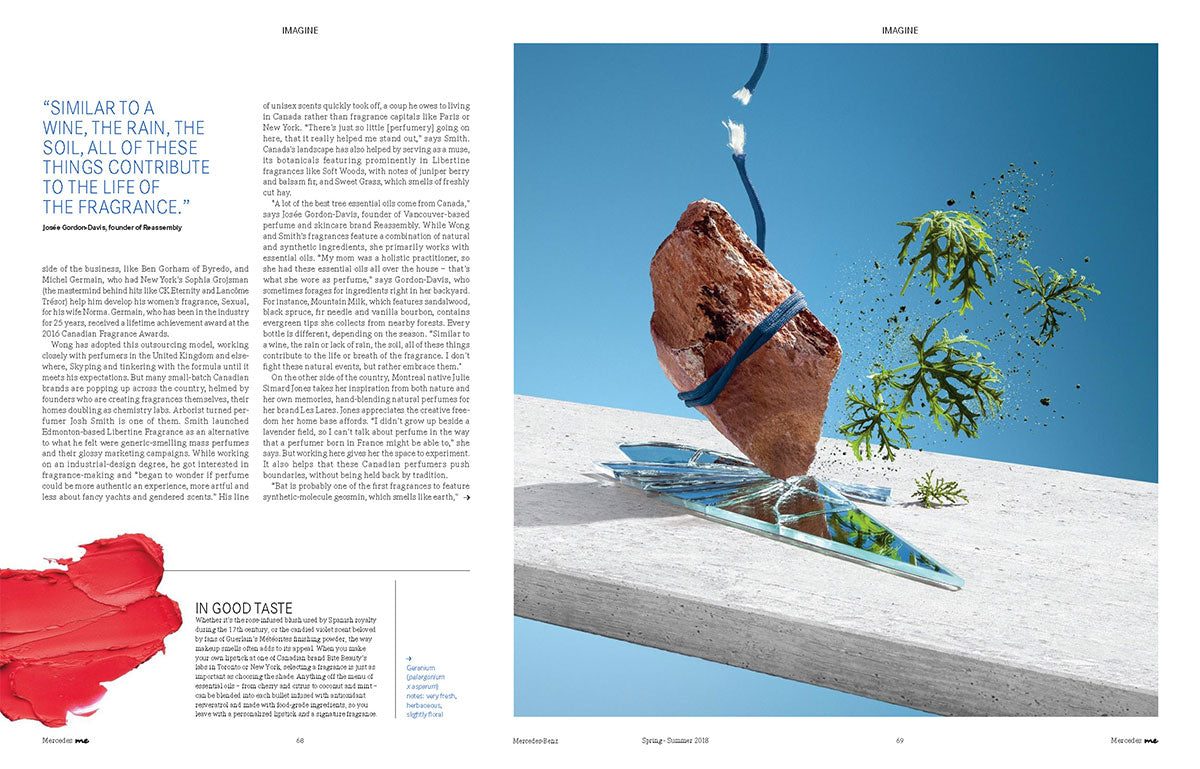
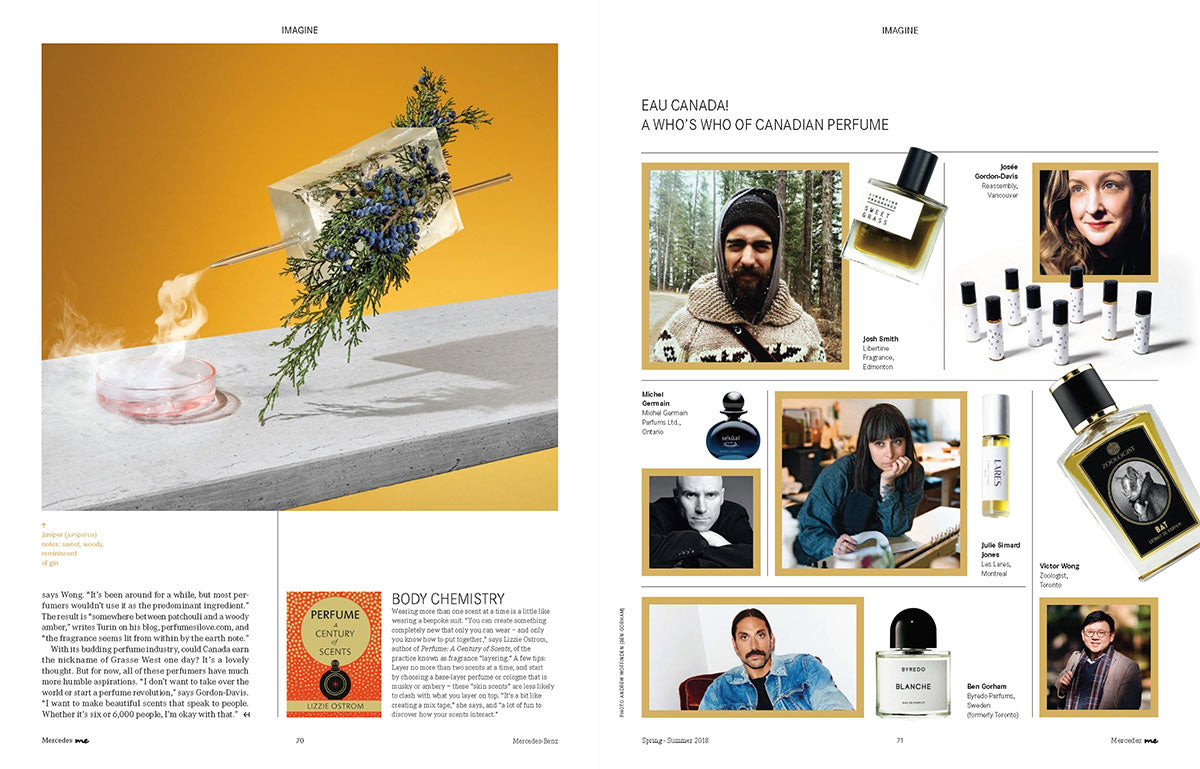
Wong has adopted this outsourcing model, working closely with perfumers in the United Kingdom and else-where, Skyping and tinkering with the formula until it meets his expectations. But many small-batch Canadian brands are popping up across the country, helmed by founders who are creating fragrances themselves, their homes doubling as chemistry labs. Arborist turned per-fumer Josh Smith is one of them. Smith launched Edmonton-based Libertine Fragrance as an alternative to what he felt were generic-smelling mass perfumes and their glossy marketing campaigns. While working on an industrial-design degree, he got interested in fragrance-making and “began to wonder if perfume could be more authentic an experience, more artful and less about fancy yachts and gendered scents.” His line of unisex scents quickly took off, a coup he owes to living in Canada rather than fragrance capitals like Paris or New York. “There’s just so little [perfumery] going on here, that it really helped me stand out,” says Smith. Canada’s landscape has also helped by serving as a muse, its botanicals featuring prominently in Libertine fragrances like Soft Woods, with notes of juniper berry and balsam fir, and Sweet Grass, which smells of freshly cut hay.
“A lot of the best tree essential oils come from Canada,” says Josée Gordon-Davis, founder of Vancouver-based perfume and skincare brand Reassembly. While Wong and Smith’s fragrances feature a combination of natural and synthetic ingredients, she primarily works with essential oils. “My mom was a holistic practitioner, so she had these essential oils all over the house – that’s what she wore as perfume,” says Gordon-Davis, who sometimes forages for ingredients right in her backyard. For instance, Mountain Milk, which features sandalwood, black spruce, fir needle and vanilla bourbon, contains evergreen tips she collects from nearby forests. Every bottle is different, depending on the season. “Similar to a wine, the rain or lack of rain, the soil, all of these things contribute to the life or breath of the fragrance. I don’t fight these natural events, but rather embrace them.” On the other side of the country, Montreal native Julie Simard Jones takes her inspiration from both nature and her own memories, hand-blending natural perfumes for her brand Les Lares. Jones appreciates the creative free-dom her home base affords. “I didn’t grow up beside a lavender field, so I can’t talk about perfume in the way that a perfumer born in France might be able to,” she says. But working here gives her the space to experiment. It also helps that these Canadian perfumers push boundaries, without being held back by tradition.
“Bat is probably one of the first fragrances to feature synthetic-molecule geosmin, which smells like earth,” says Wong. “It’s been around for a while, but most per-fumers wouldn’t use it as the predominant ingredient.” The result is “somewhere between patchouli and a woody amber,” writes Turin on his blog, perfumesilove.com, and “the fragrance seems lit from within by the earth note.” With its budding perfume industry, could Canada earn the nickname of Grasse West one day? It’s a lovely thought. But for now, all of these perfumers have much more humble aspirations. “I don’t want to take over the world or start a perfume revolution,” says Gordon-Davis. “I want to make beautiful scents that speak to people. Whether it’s six or 6,000 people, I’m okay with that.”
May 11, 2018
Ode de Parfum
"I mean, really, Moth is so good that describing it with stock perfume lingo and cliched snuffed-candle imagery doesn’t do it justice…"
Cafleurebon
"Moth echoes the seductive nature of the afterlife, that connection to the Eternal."
Ventvenir
It is like a conductor to another world, and it reminds me story of Faust and Mephistopheles. But after a while, Moth becomes very close to the skin and very deep. It brings thoughtfulness and calmness.
Beauty Meow's Review of Zoologist Moth
Tommelise's Review of Zoologist Perfumes Moth
Smelling Great Fragrance's Review of Zoologist Moth
Sabbath of Senses (Polish)
(Translated) "Moth is a scent that screams in a whisper. It sounds clearly in an illusory olfactory silence. Damped, matte, without reflections and reflections. Soft as wilted flowers, delicate as the wings of a butterfly, mysterious like the night."
April 28, 2018
Hi Tomoo, how have you been? Anything new since our last collaboration?
Yes. I have to say thank you for letting me compose Nightingale for Zoologist. It opened the door for me as a perfumer, and led to my second perfume creation, Tuberai, for a new brand called Beau Kwon based in California. Tuberai is one of three fragrances they released this spring.
That’s great! You are very talented, and you definitely should create more perfumes for the world!
Let’s talk about Moth. Shortly after our first collaboration in 2016, you sent me a few perfume prototypes for consideration. One of the them was called “The Night”, if I remember correctly?
It was my original composition, Kagaribi (The Cressets / Watchfire), which was inspired by an old Japanese poem, the same way Nightingale was.
The poem was written by Onakatomi no Yoshinobu Ason (大中臣能宣):
みかきもり
衛士のたく火の
夜はもえ
昼は消えつつ
物をこそ思へ
Like the warder's fires
At the Imperial gateway kept,
Burning through the night,
Through the day in ashes dulled,
Is the love aglow in me.
I see burning fire in darkness in this poem. I tried to express this with labdanum, patchouli, rose and a spice accord.
I liked that prototype instantly. It did smell dark, mysterious and a little powdery. And I think the spice accord you built was very novel. It’s strong and unconventional. You suggested calling it “Black Panther” if it was published under Zoologist. However, I had had a hard time picturing that spice accord being called “Black Panther”. I immediately thought about calling it Moth! What was your reaction?
I thought the name “Moth” didn’t sound very cute!
In the original formula, I used many spices from India, which led me to form an impression of a black panther. However, now I think “Moth” is a better fit than “Black Panther”. If it was released as Black Panther, you might have a hard time acquiring the trademark because of the recent release of the movie of the same title, even though the perfume was created a year and a half ago.
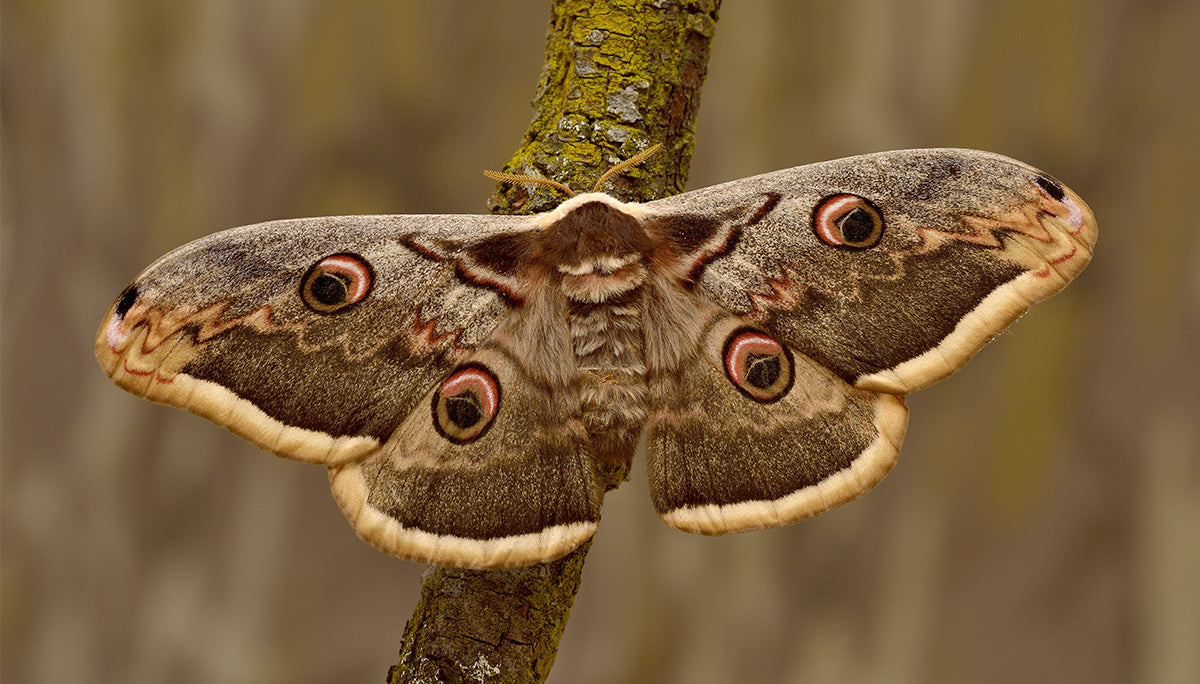
I always wanted to create a “smoky and powdery perfume”, and for a very long time I couldn’t come up with an animal whose characteristics had any association with smoke. But with that prototype, I could picture adding a smoky accord to the base to symbolize a moth flying towards flames and killed by them. It’s a bit tragic, but I think it suited the perfume’s overall mood. In Japanese culture, there is a lot of folklore around moths, correct?
In Japan, we have a proverb: “Like a moth flying into the flame”. That image fits perfectly for this perfume composition, for it reminds me of a person burning him/herself in a fire of everlasting love. By the way, I guess many Japanese would associate Moth with the movie, “Mothra vs. Godzilla”!
I want to talk about the three major accords you built for Moth. Let’s talk about the top notes first.
The opening is quite spicy, but I never feel it that much. I just wanted to create an impression of an image of burning fire with crackling sounds, and I thought I needed to use not only some smoky notes, but also spices. As you might know, it is trendy to incorporate cumin in perfumery, but it is never easy to use it effectively. I tried different materials, including natural cumin oil and the aroma chemicals cuminaldehyde (or cumin nitrile) to achieve the result I wanted. Oh, do you remember the early prototype that was overdosed with cumin? You said it smelled like the Chinese dish Beijing Duck!

For the middle notes, you have built a very interesting flower accord. I believe the powderiness of the perfume comes from this accord. I’d like to associate it to the little scales on the wings of a moth.
I used heliotropin and iris to express the scales on a moth’s wings. And I added a red rose accord (the same accord used in Nightingale) for the “passion” with other florals, too. Moth contains a lot of flowers, more than people would imagine. I needed them to make the composition softer in order to unite the notes.
I thought the smoky base accord was fantastic – it’s woody, sweet, additive, and a little “high pitch”. It almost smells like a thin, very focused funnel of smoke shooting high up to the sky. How did you achieve that effect?
Generally, birch tar and cade oil are used in perfumery to express smokiness. But I chose Guaiac wood oil instead, which itself has a spicy and smoky touch. It was a perfect fit for Moth. I also used the earthy-smelling nagarmotha (it’s widely used in oud compounds) and Indian vetiver (called Khus in India) that was matured in copper pots. Together, all those create a unique smell.
I have received some interesting and opposing feedbacks from people who have smelled Moth. Some think it’s feminine, some think it’s unisex, some think it’s very modern and avant-garde, some think it’s retro. How do you describe Moth? Who do you think will wear it well?
It has a feminine side and a unisex side, and also a masculine part! Maybe classical, or maybe modern! As you know, a fragrance has many different aspects, so people can feel anything and never be wrong, meaning all feedback gives perfect answers. I am a fragrance maniac, so I'll be happy to learn that anyone who is bored with mainstream products chooses to wear Moth!
By the way, I must say thank you to the illustrator. I am so grateful for her artwork. Her illustration turned the Moth into something cool and cute!
Thank you very much!
April 25, 2018
Sie stehen auf unisex-düfte?
Do you like unisex fragrance?
Dann sind sie reif für nischen-parfums
Then you are ready for niche perfumes
Betreten sie die wunderbare Welt des kleinen Manufakturen, wo Duft radikal-emotional und frei von Zuordnung umgesetzt wird
Enter the wonderful world of small perfume houses, where fragrance is radically emotional and free from association.
1. Banane, Feige und Leder: "Bat von Zoologist
1. Banana, Fig and Leather: Bat by Zoologist
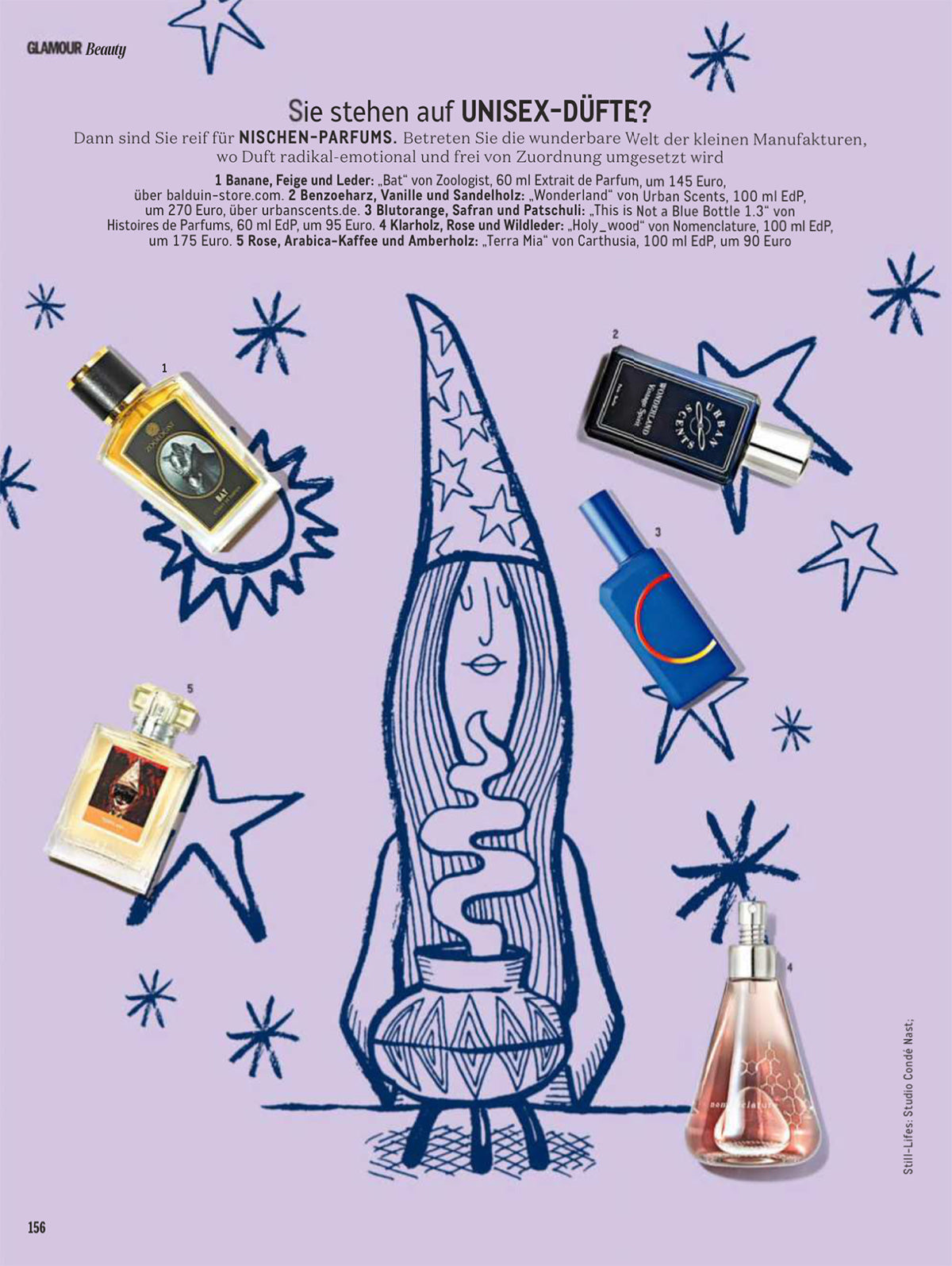
April 15, 2018
Higgs, the science fashion magazine in United Kingdom. In issue 02, they have created artwork inspired by Zoologist Rhinoceros and Camel perfumes.
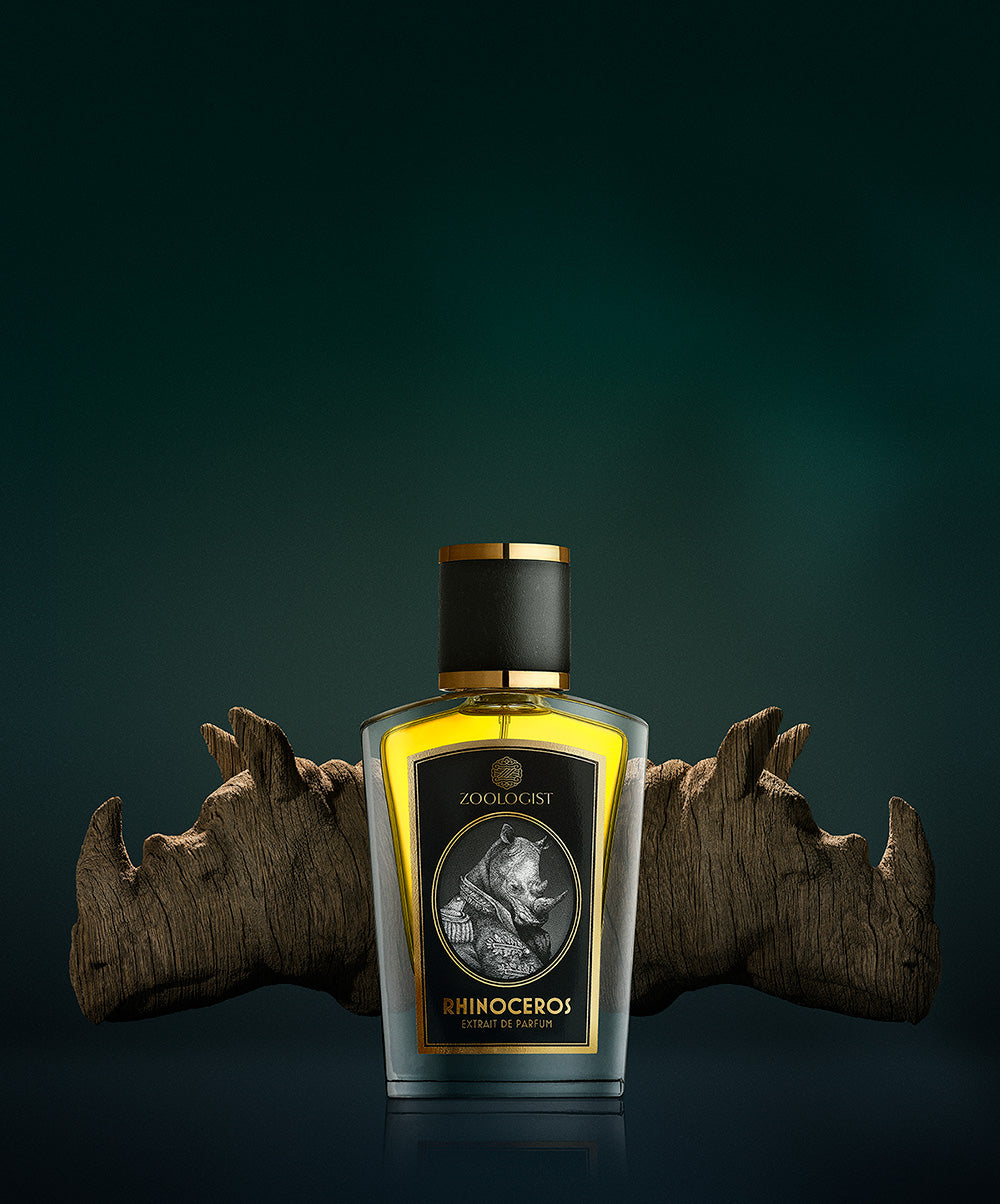
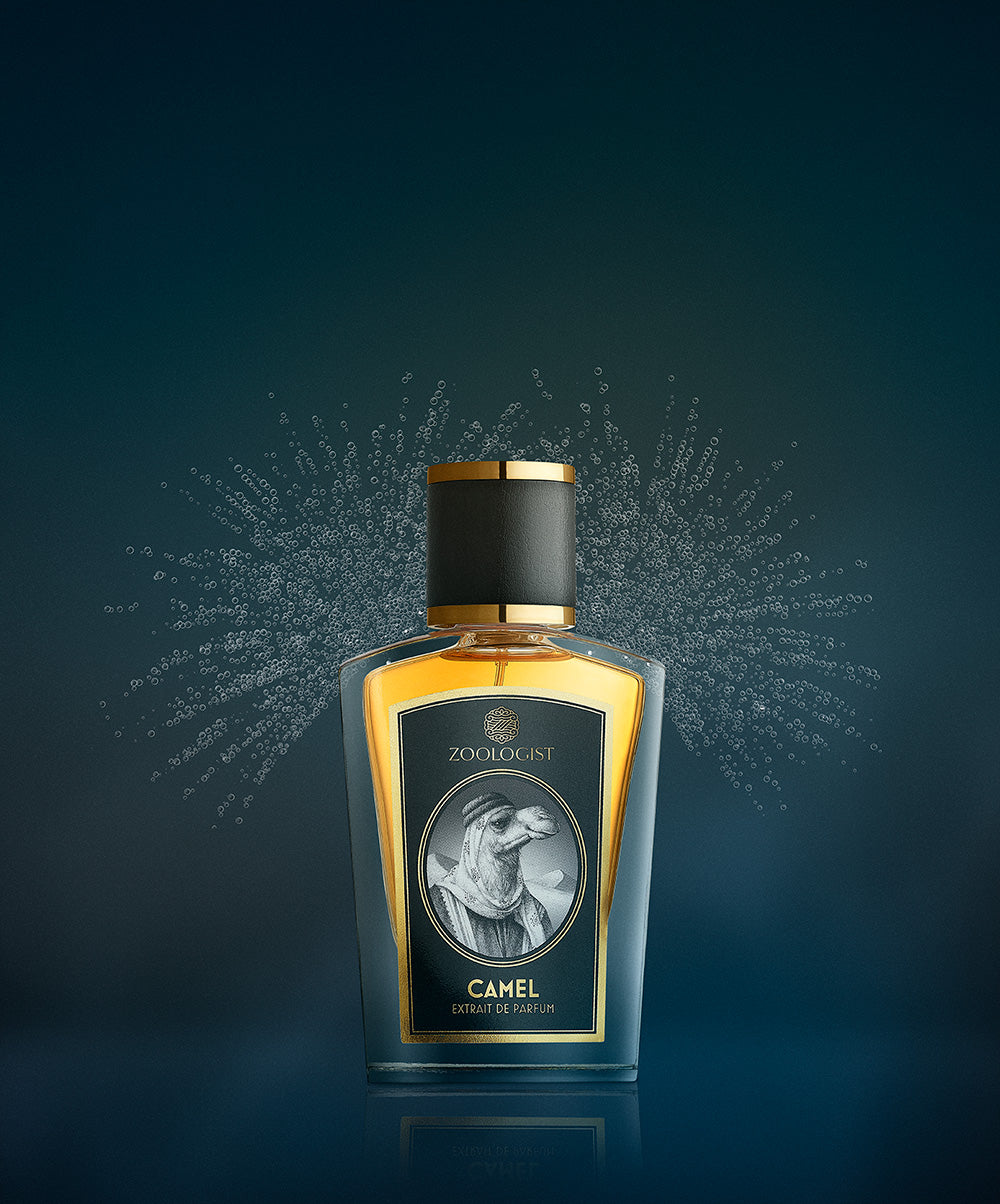
February 15, 2018
Zoologist Hyrax Deluxe Bottles and Travel Spray will be available in mid-June 2018 through this web shop and Luckyscent.com. Samples are available now.
Could you tell us about yourself? When did you become interested in perfumes and perfumery?
I studied pharmacy at the beginning of the ’90s, and was impressed by the novel Das Parfum. I visited Grasse in 1991 for the first time. So I started studying raw materials, reading books about perfume composing. During the 18 years I worked as a pharmacist in the family-owned pharmacy, I was always addicted to scents.
How long have you been studying perfumery? Are you a self-taught perfumer? Did you have any mentors?
I finished studying pharmacy in 1995 and became a pharmacist by profession, but I also started to become a self-taught perfumer, through passion, at the same time. I made contacts with some people in the industry to learn more about special molecules. Dr. Philip Kraft (Givaudan) and Egon Oelkers (Symrise) were the first professionals who ‘reviewed’ my first perfume compositions more than 10 years ago and encouraged me to go my own way. Later, I met Maurice Roucel with my Pink Patchouli on a blotter. He said I should commercialize it, that it would be a perfect niche scent. That was in 2013.
What is the fragrance market like in Germany? Do Germans wear a lot of perfume, and do they have a perfume culture like France’s? Do you know if there is a fragrance-making community in Germany? Are there any notable local indie or niche perfumers to your knowledge?
I think the perfume market in Germany is a copy of the French market. It’s difficult for niche labels, but there are people who are interested in what we do. There are not many self-taught artisan perfumers with their own brand; in Germany I know only of Tanja Bochnig of April Aromatics.
When did you decide to create your own perfume house? Was there a catalyst to making that decision? Were they any perfume brands or successful indie perfumes that inspired you?
In 2012, we sadly closed our pharmacy. There were many reasons for that, but it’s another story. After that, I was burnt out because of some bad things that had happened. But it was still my big dream to give perfume to the people, so I started my adventure by founding SP Parfums in 2016. I started with my “Essential Collection” – five fresh and five woody scents, and also published my book, Duftspuren, in German.
As far as brands that influenced me… I think I was inspired by Comme des Garcons with my interest in new molecules, but also fascinated by brands like Le Labo because of their style and marketing.
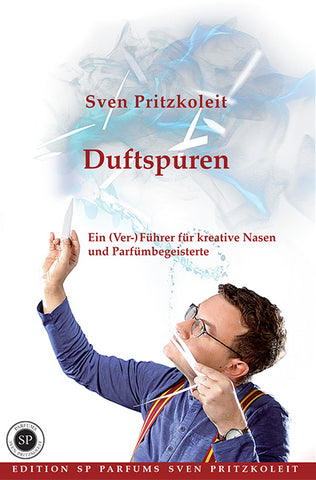
What is your book Duftspuren about?
I wrote Duftspuren as a guide for those people who are interested in perfume composing. I wanted to give them some inspiration for their studies by telling them my story. It’s about my way to learn about perfumery and perfume composing.
Can you tell us about SP Parfums? What is its olfactive style and philosophy? Are your perfumes modern or classic? Do you prefer natural ingredients or prefer mixed media?
Some scents from my childhood memories are the main ingredients of my creations. So, you can find my grandfather’s shaving soap in Lignum Vitae Forte, the smell of old pharmacies in Liquorice Vetiver… and wood, wood, wood. And animalics, vintage-style classic perfumery combined with new molecules in a (hopefully) unusual modern interpretation. That’s me, SP PARFUMS.
I first met you in Milan in 2017 at the perfume show, Esxence. You had a booth there. You were introduced to me by Fragrantica editor Miguel Matos from Portugal who spoke very highly of you. He told me I should collaborate with you. In fact, you two just had had a collaboration and you were showcasing the new scents. But first tell me, how did he know about you? What was the collaboration about?
When I presented my ESSENTIAL COLLECTION in Düsseldorf in April 2016, there was that moment when things happen… I met Miguel Matos, who was impressed by my Civette Intense. He was the first to write about my perfumes at Fragrantica. I asked him if he would be interested in creating a kind of ‘private perfume’ with me and writing about the process. Miguel was very interested in that project, and he wanted me to do a perfume with the vintage scent of suntan lotions of the ’70s/’80s and the glam of the beach life on the Algarve at that time. Three months later, Suntanglam was born, and we did two more scents together, Lisbon Blues and Funfair for “SP Private Perfume with Miguel Matos”, both also related to Portugal, Miguel’s home and home to his childhood memories. Miguel and I became friends and ‘scent twins’ while working together. It was an inspiring and exciting time for both of us.
Do you enjoy designing fragrances for someone else? Why?
It’s always a challenge to create with someone. I love to learn about someone’s scent memory. The process is always a gift of love, life and open-minded inspiration.
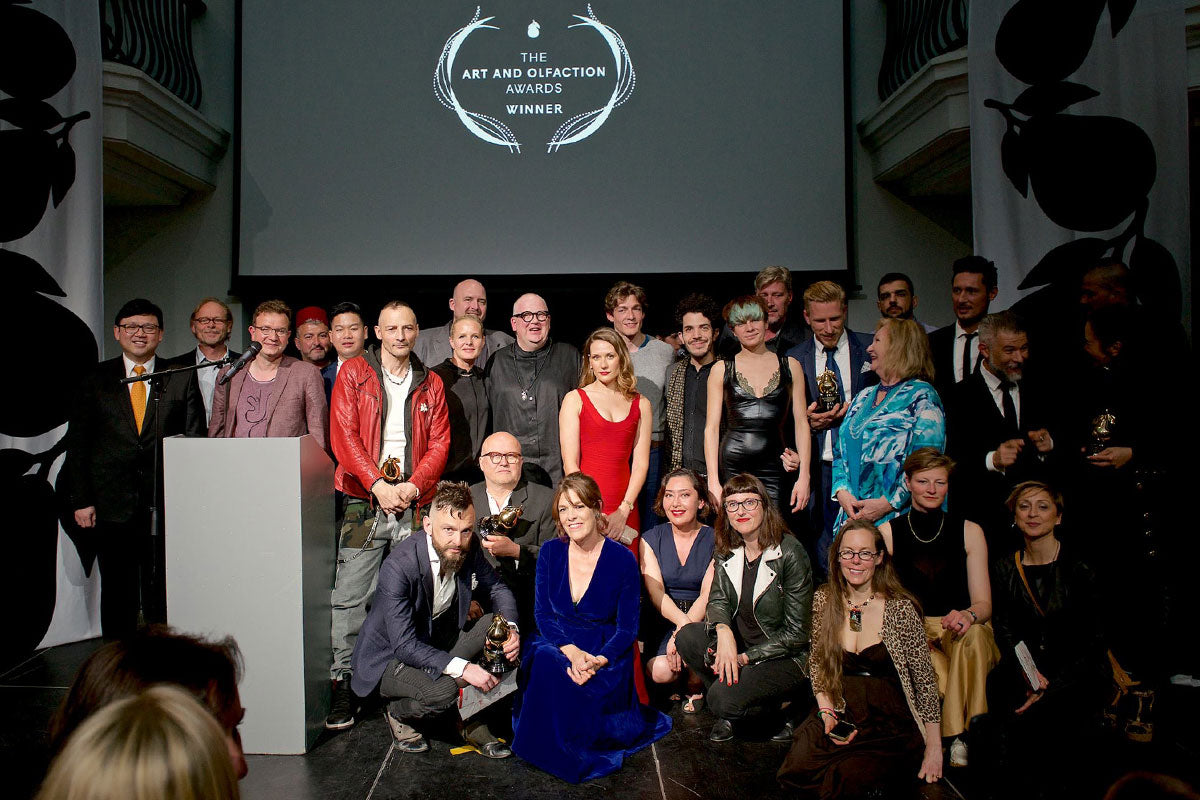 Above: At the Art and Olfaction Award Show 2017, Berlin. On the left, Victor Wong of Zoologist Perfumes, Andy Tauer and Sven Pritzkoleit of SP Parfums.
Above: At the Art and Olfaction Award Show 2017, Berlin. On the left, Victor Wong of Zoologist Perfumes, Andy Tauer and Sven Pritzkoleit of SP Parfums.
We decided to have a collaboration shortly after Esxence, and I met you again a month later at the Arts and Olfaction Award ceremony night, as both of our perfumes had been nominated. (Yours was Liquorice Vetiver and mine was Zoologist Civet.) By that time, you already had some quick prototypes for me! But first, please tell us more about your nominated perfume.
I was surprised about the A&O nomination of Liquorice Vetiver, because it has that kind of medicine smell. But there is that link to my profession as a pharmacist, and I think Liquorice Vetiver fixes that memory of an old pharmacy with herbal tea boxes.
I remember, of the many perfumes samples of your own line, the one that stands out most to me is Civette Intense. I mean, just the name itself gives me both shivers and excitement. It tells me that you have guts and you are not afraid of bold and animalic scents. Can you tell me more about that scent? Did you use real civet in the scent? Did you ever consider people might not wear it in public, and that you designed it purely for the wearer’s own pleasure? Are your other perfumes also very animalic?
I think Civette Intense is one of my signature scents – and a perfume of desire, too. The civet is absolutely in the focus with Himalaja Narde, which brings that green and vegan-animalic contrast. I love to combine animalics and woods. It’s some kind of natural-born instinct, which gives power to our soul. I think Civette Intense is absolutely wearable as a perfume to attract as well as a mood-modifier scent to give power, energy, freedom.
At SP PARFUMS, I use high-quality synthetic reconstitutions of animalic scents, so no animals were harmed for that.
You have smelled Zoologist Civet. What was your reaction? Did you find the civet note too mild?
I like Zoologist Civet. It’s different from Civette Intense, because civet is not in the focus. It’s another style.
I love to have a potent focus as a theme, which is present for hours, and I love to have contrast, like harsh and smooth or sweet and earthy, like I did with Lignum Vitae Forte.
What was your reaction when I told you I wanted to make a perfume called ‘Hyrax’?
It was a challenge to create Hyrax, absolutely!

Hyraxes are little rodent-like mammals that live in African mountains. Their closest relatives are actually elephants! Hyraceum is the petrified and rock-like excrement composed of both the urine and feces excreted by them. It ages and petrifies over hundreds of years, and now it’s a sought-after material for perfumery. In the perfume industry, people like to call it African Stones. Can you tell me what hyraceum tincture smells like?
The smell of the tincture of Hyraceum / African Stone is like a combination of civet and castoreum, plus that urinous smell.
Civet and castoreum are two popular animalic notes in perfumery, but not so much for hyraceum. Can you tell us more about the ‘hyraceum accord’ you initially built?
First, I tried to make my own accord that smells like hyraceum with different materials so I could get it in contact with other raw materials and see how it works in them. Also, authentic hyraceum tincture is not strong enough to have the power of civet/castoreum to last for hours, so I created my own animalic mix.
But in the end you still added some real hyraceum to it. Why?
I used authentic hyraceum not just because I want to have authenticity, but because there are some side effects – like that urinous aspect, and some special tar-woody notes, which are unique.
Zoologist uses only synthetic musks, but in Hyrax we use hyraceum. Apparently, Hyrax is no longer a ‘vegan’ perfume, but can you reassure the wearer that no animals are harmed with the use of real hyraceum?
With using hyraceum tincture, no animals are harmed. Hyraceum is a kind of olfactoral 'fossil', the excrement of hyrax.
Can you tell me what other notes you’ve picked for Hyrax and why? What’s the olfactive theme or effect you want to achieve with this fragrance?
While ‘playing’ with some hyraceum tincture, I got an association of oud from Laos, which has that animalic smell. The idea of an “oudy perfume” with hidden florals was born, and I tried to find some molecules to construct that. In the end, I decided to do an animalic floral oud with a harsh mineralic, peppery, razzle-dazzle start to represent 'Hyrax is coming, look at me!', then soften it with hidden lilac-hyacinth florals, coming up more and more with tonka, woodsy and musks and a slightly soapy touch in a skinny musk dry-down.
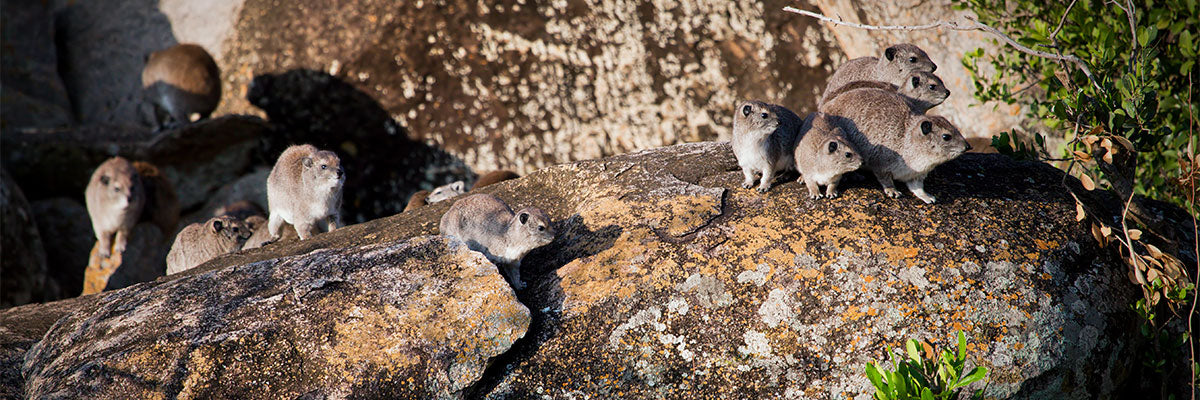
I have to say when people look at the notes pyramid and compare it to the actual scent, many might not be able to tell they are in the perfume… as if the notes have all fused together to create a single scent.
A friend of mine, who is really not a big fan of animalic scents, tested Hyrax and he wore it in public without any fear! And he didn’t wear it as an animalic scent.
I think Hyrax is abstract in the sense of being typical animalic – it’s an ‘oudy’ concept with the effect of a real oud attar with a hyraceum focus, but is much more than extended hyraceum. And I tried not to destroy the hyraceum focus with the additional notes.
Yes, it’s a fusion. The structure of Hyrax is not a pyramid – it’s done with a focus and layerings to move it, but not to destroy the main theme. I hope, it will move people, too.
Now I have to mention the cost of the perfume compound based on your perfume formula! When the compounding house gave me the quote, I was shocked! It was so high that I had to ask you to replace some materials with less expensive but similar-smelling ones. In the end, you successfully persuaded me to use the original formula.
Hyrax contains high-quality animalic reconstitutions and natural raw materials like tonka bean and Turkish rose oil, which are expensive. I always use the materials a perfume needs so it will be as unique in smell, volume and quality as I want it to be. You were a bit concerned about the costs and determined to change it. I was really sad to lose that spirit we created. Any changes in the formula would destroy that unique oudy fusion spirit. But in the end, you used the original formula. I was happy, and you felt the same.
Compared to other Zoologist scents, I must say the opening of Hyrax will be very confusing to most perfume wearers, including perfume connoisseurs. Some might be repulsed! What would you say to them? Who’s the target audience, in your opinion?
The opening of Hyrax is a peppery, "razzle dazzle" animalic, a hyrax declaring, 'Here I am, it’s me!' scent. I love that shock! I love perfumes that open with a shock, because I am excited to find out what comes next. In the case of Hyrax, it changes to a smoother floral oudy type on the skin! Take your time. You won't believe it’s the same perfume after the first two minutes.
I don't think there is a special target client. I think every meeting with a perfume is a play of trial and error. It’s the same with people. The same in real life.
What’s next for you?
I just finished a new perfume with Miguel. It has the working title Nowhere Fast, for an exhibition in Lisbon. And now I am working on two new floral perfumes, hopefully to be launched late summer.
Thank you very much!
February 13, 2018

By Tresor Prijis
…"Further expanding on this notion of eroticism is the breathtaking Civet from Zoologist, which paints a portrait of this animal magnetism in hues daringly dark. The feral nature of the civet accord is veiled in a cloud of spice that reverberates through a bouquet of subdued florals."

